How To Write a Satire Essay?
20 February, 2021
13 minutes read
Author: Richard Pircher
As a high school or college student, you definitely have your fair share of assignments. From carrying out backbreaking research on late historical figures to writing endless essays, school work can be a tad draining. However, one assignment that always seems to have students in a fix is the satire essay.

Writing an essay on satire is one of the hardest tasks you’d come across in high school or college. This kind of essay typically requires a vast knowledge of the subject matter and a great sense of humor.
This leads us to the big question: how do you write a Nobel prize-worthy satirical essay? Let’s find out.

What Is a Satire Essay?
Satire is a literary device or genre employed by a significant number of professional authors. This genre is particularly aimed at criticizing a person or group of persons for their vices, wrongdoings or shortcomings.
Usually, satire is used to shed more light on significant political or cultural issues within a society. A satire essay is a type of essay that employs devices such as sarcasm, humor and irony to mock a particular person, situation or ideology. Basically, it pokes fun at certain people or situations in an elite and sarcastic manner.
How to Write a Satire Essay: Writing Tips
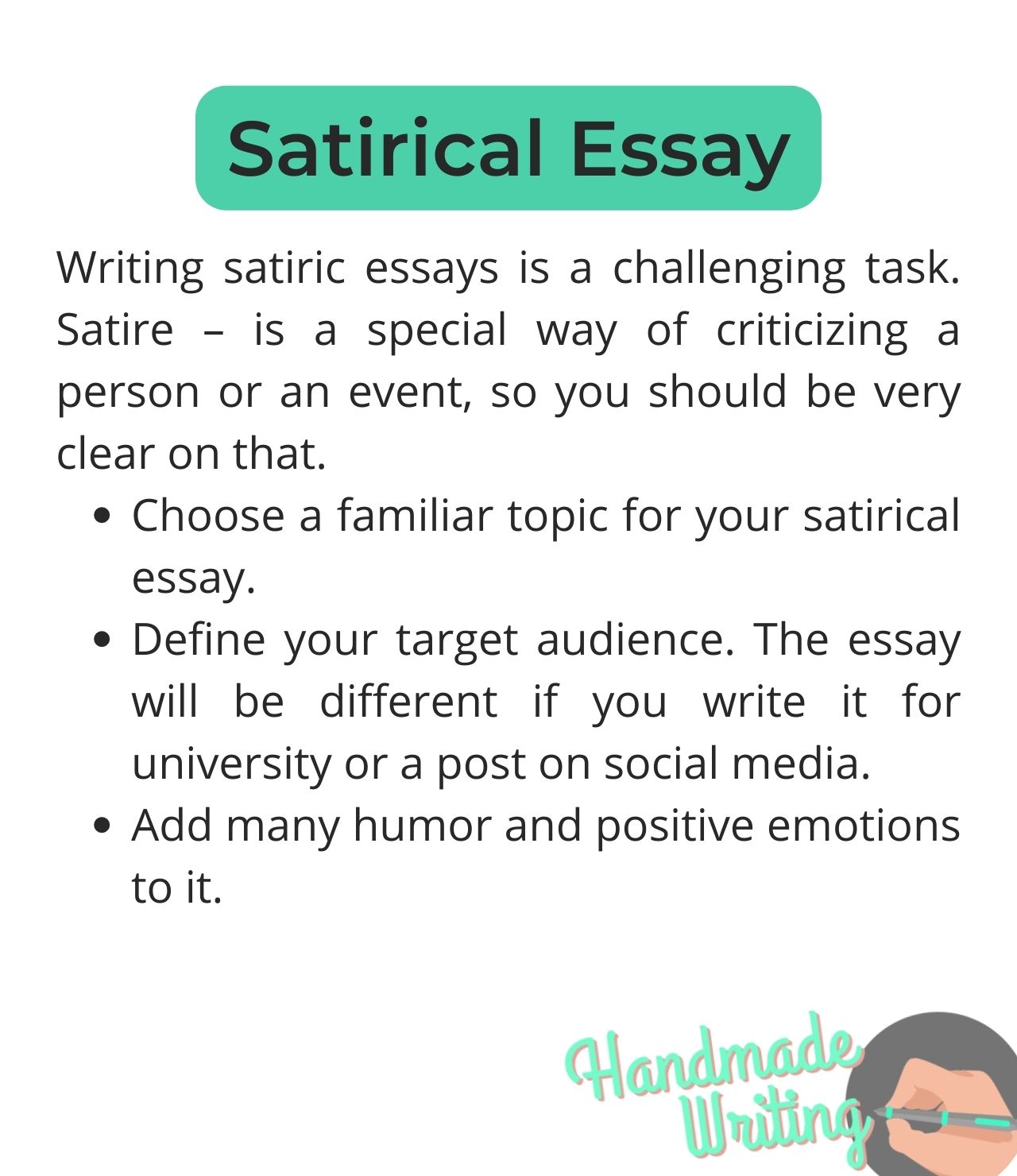
Wondering how to write a satire essay? Even though it may seem like a daunting task, writing a satire essay can be a seamless process once you apply the following tips:
Choose an original and relevant topic
So you need to write a satire essay. The first step to take is to choose your topic. In some cases, your teacher or professor may assign a topic to you, but more often than not, you’d need to come up with a topic of your own.
In this case, decide the area you want your essay to focus on. You could focus on a political or social situation, depending on what you want.
However, it is advisable to choose a topic that you’re familiar with. This way, it will be easier to dig up facts and evidence to support your point of view.
Consider your audience
Your audience is the focal point of your essay. As such, it’s very important that you consider them at every stage of the writing process. Is your essay aimed at high school students or college professors?
Would it be read by professionals or just your fellow students? Identifying and considering your audience will help to determine the appropriate tone for your essay.
If your target audience is mostly made up of fellow students and friends, you can get away with using a casual tone. However, if you expect professionals to read your work, it’s advisable to go for a more formal tone in your essay.
Add lots of humor
What makes a satire essay so interesting? Is it the topic or the author’s writing style? Well, the major spice of any satire essay is the generous use of humor. You want to make your audience laugh at the ridiculousness of a particular person or situation. As such, the best way to achieve this aim is by applying devices like irony, sarcasm and hyperbole.
When used tactfully, these devices can have the desired effect on readers.
Stick to plain facts
Inasmuch as satirical essays employ devices like humor and exaggeration, it’s important to stick to plain facts when writing your essay. Adding incorrect theories or outright lies to your essay would only render it invalid in the court of public opinion.
As such, it’s important to only state facts that can be backed up by strong evidence. For further credibility, cite your source after stating figures, theories or opinions.
This would assure your audience that your essay is credible. If you can’t find facts or evidence to support a particular argument, then it is advisable to avoid including it in your essay.
Use the ELP format
The ELP format is a great way to ensure that your satire essay is professional and of stellar quality. ELP is an acronym for ethos, logos and pathos.
These three elements form a significant part of your essay and can either make or mar your work. But how and when do you employ them in your essay?
Ethos informs the readers about the issue at hand and their pre-existing beliefs. As such, this tool should be used in the introductory part of the essay to lay a foundation for the readers.
Logos provides the audience with pure facts and figures, thereby adding credibility to your work.
Pathos, just like the term implies, would evoke the appropriate feelings and emotions in your audience. Whether you’re trying to evoke sadness, sympathy or anger, using this tool the right way would help you achieve your aim.
Be tolerant
Even though a satire essay is often riddled with sarcasm and irony, it’s important that you use these devices without making any offensive statement.
Your audience will definitely be made up of people from different walks of life. As such, you don’t want to make remarks that may be deemed to be discriminatory or offensive to a particular sect.
Knowing the boundary between satire and being outrightly offensive is a delicate art that requires practice and a keen understanding of human psychology. However, to ensure that your essay is in no way offensive, you could ask for second opinions from your colleagues or teacher.
How to Find Original Topics
With how difficult satire essays are, you’d think no one would be writing them. However, a quick Internet search would show you an abundance of already-written satire essay topics. In fact, choosing a topic that has not already been written by someone else can be a daunting task.
If you’re trying to find original satire essay ideas or topics, here are a few tips that may help you:
Find major political or cultural events
If you look around you, you’d definitely find a wide range of interesting political or cultural events that would make for a brilliant topic. Go through published articles, media publications and the news to find resources for your dream topic.
Brainstorm interesting ideas
Once you’ve gone through the resources listed above, you can then go on to brainstorm any ideas you may have come up with. Ensure that your topic is interesting and witty enough to catch the attention of your readers.
70 Satire Essay Topics
Struggling to find original satire essay topics that would interest your audience? Well, here are some sample topics on different subject matters that would definitely inspire you:
- The royal family and Princess Diana: a mystery that never got solved
- What would today’s world look like if the Holocaust had never happened?
- The best American presidents in history vs Donald Trump: a tale of two worlds
- How World War II should have turned out
- What was so special about Attila the Hun anyway?
- More than just his height: a review of Abraham Lincoln’s policies
- The real truth behind Thanksgiving: why was it created?
- Adolf Hitler and the Holocaust: a not so shocking tale of his prejudice
- The never-ending cold war between Catholics and Protestants: how it all started
- Why slave trade should have been abolished before it even started
- Trump: analyzing why political leaders should steer clear of social media
- Politicians and broken promises: a match made in heaven
- Is political correctness the perfect cure for all modern ailments?
- The gun-slinging citizen: an analysis of the legalization of guns and fire-arms in the United States
- Freedom of speech and what happens after you make your speech in today’s world
- How to deal with electoral loss: handy tips from the best losers
- Pro-life VS Pro-Choice: the never ending moral argument between conservatives and liberals
- How to satisfy the United States’ healthcare needs
- Why the death penalty should have died many centuries ago
Marriage and Family
- Being a cool parent in today’s world: everything you need to know
- Is married life really overrated? Asking for a single millennial
- The United States’ secret behind its high divorce and separation rates
- The perfect recipe for a peaceful divorce in today’s world
- Should same-sex marriage be legal in every part of the world?
- Saving for the kids’ college: the bane of every married couple
- Big weddings or small weddings? The ultimate introvert-extrovert war
- Trying to have a tight family discussion: a how-to guide
- Should women walk on hot coals barefoot to please their fiancé’s parents?
- Why the internet is the perfect place to seek relationship advice
- Why true love is as real as Santa Claus and Jack Frost
- All is fair in love and war: is it really?
- What happens when you fall in love with two different people?
- Why millenials should normalize leaving first dates immediately it becomes awkward
- How to start a conversation on a first date without being awkward
- Cohabitation: ten lies you’d find on the internet in today’s world
- Why dating sites should have existed in the 18th or 19th century
- Finding love in the 21st century: are dating sites the modern version of arranged marriages?
- How pickup lines determine the start of a strong modern relationship
- Should there be an age limit on love between adults?
- The slow yet sure eradication of chalkboards from modern classrooms
- Why dropping out of school is an under-rated decision for millenials
- Are good grades a social construct created to frustrate students?
- Why the social pyramid in high school exists and how to navigate it
- Dealing with bad grades: the ultimate guide to getting over a failed exam
- Should parents panic when their child drops out of school?
- Why detention is a failed attempt at disciplining high school students
- Online learning: has the pandemic done anything for school truants?
- Why bullying and bullies should be eradicated from high school systems
- Should you be a wallflower or social butterfly in high school?
- How television and social media slaughtered newspapers and buried them
- Does the media truly influence people’s lives and decisions in today’s world?
- The Media and political leaders: who is a better liar?
- Fake news: how to squash its occurrence in today’s media
- Television vs social media: which one played a bigger role in COVID-19 sensitization?
- Is Facebook a peeping Tom? How social media ruined everyone’s privacy
- Is the free press really free or is it being controlled by puppet strings?
- Censorship vs free speech: what do millennials really need?
- Scandals and brand wars: is there anything like bad publicity?
- Why free publicity never works for brands and modern celebrities
- How to become a millionaire without robbing a bank or grocery store
- Money can’t buy you happiness: the biggest lie ever told to mankind
- Why being broke can be the ultimate death sentence for anyone
- How to save money without literally starving to death in today’s world
- Why working hard does not necessarily translate to more money for you
- Should billionaires exist? Analyzing Jeff Bezos’ wealth and the plight of Amazon’s workers
- Why financial books are a complete waste of money and valuable time
- The gender pay gap: how to close it in the 21st century
- Why does money have a therapeutic effect on most people?
- Analyzing Robinhood’s lifestyle: is it okay to steal from the rich and give to the poor?
Satire Essay Examples
Still not sure how to write the perfect satire essay? Well, in this case, you can always refer to a well written satire essay example. Here are some satire essay examples that would definitely set you on the right track:
https://thecampanile.org/2019/10/23/satire-why-climate-change-is-fake/
https://manysmallvoices.wordpress.com/tag/satire/
Write a Satire Essay with HandMadeWriting
With these few tips and examples listed above, you can now go on to draft your very own satire essay. However, if you’d rather not go through the hassles of writing it yourself, you can hire HandMadeWriting essay writer services.
With us, you are guaranteed a stellar, well-written satire essay that would definitely impress your teacher and audience.

A life lesson in Romeo and Juliet taught by death
Due to human nature, we draw conclusions only when life gives us a lesson since the experience of others is not so effective and powerful. Therefore, when analyzing and sorting out common problems we face, we may trace a parallel with well-known book characters or real historical figures. Moreover, we often compare our situations with […]

Ethical Research Paper Topics
Writing a research paper on ethics is not an easy task, especially if you do not possess excellent writing skills and do not like to contemplate controversial questions. But an ethics course is obligatory in all higher education institutions, and students have to look for a way out and be creative. When you find an […]

Art Research Paper Topics
Students obtaining degrees in fine art and art & design programs most commonly need to write a paper on art topics. However, this subject is becoming more popular in educational institutions for expanding students’ horizons. Thus, both groups of receivers of education: those who are into arts and those who only get acquainted with art […]

If there’s any genre of literature designed to make fun of humankind, it’s satire. In both prose and poetry, writers have employed satirical techniques as far back as Ancient Egypt, utilizing the conventions and elements of satire to write about our follies.
Satire writing has become more popular in recent years. This is partially due to the internet: greater access to information has given writers more follies to satirize. It also helps that satirical publications, like The Onion and Reductress , have amplified satires about the modern day.
While headlines like “ Overly Cautious Pregnant Woman Only Going To Ride Roller Coaster 6 Or 7 Times ” seem silly and unsophisticated, there’s actually a fine art to satire that many readers and writers overlook. This article covers the basics of how to write satire: the different types of satire, the various elements of satire, and different satirical techniques essential to the form. Along the way, we’ll analyze those elements and techniques through some satire examples.
But first, what is satire? It’s important to understand both what it is and what it isn’t . Let’s define satire accordingly.
Satire Definition: What is Satire?
Satire is the art of mocking human follies or vices, with the intent of correcting or criticizing those shortcomings of human nature. It is, quite simply, a tasteful means of ridiculing human behaviors, institutions, and politics.
Satire definition: the art of mocking human follies or vices, with the intent of correcting or criticizing those shortcomings of human nature.
Now, satire isn’t just senseless ribbing. Writing about something with sarcasm, irony, or condescension doesn’t make something satirical. Nor does it count if you simply make fun of something: an essay that laughs at arson victims, for example, would just be cruelty.
Rather, satire must criticize a specific action, belief, or institution. It must poke holes in the logic of those actions, beliefs, or institutions, without ever explicitly stating the humor. Finally, it must showcase this flawed logic with the intent of creating awareness and inciting change.
Let’s use an Onion article as an example. Read this brief story: “Mark Zuckerberg Asks Hawaiian Neighbor To Cut Down Unsightly, Overgrown Rainforest”
The title alone makes for a great bit of satire, but let’s break down what the article is doing.
- Realistic fiction: For starters, this never happened—but it sounds like something that would.
- Ironic use of “lack of respect”: Zuckerberg finds the forest’s presence to be disrespectful, though his request to disrupt the natural land is far more disrespectful.
- Hyperbolic language: Phrases like “unkempt biome” and “obnoxious waterfall” are hyperbolic and unusual, signifying the comedy of the article.
- Scornful Tone: The writer of the article clearly expresses a scornful, satirical tone.
- Subtlety: The article never says “Mark Zuckerberg is a bad person.” But it does quote him as calling native Hawaiians “disgusting nuisances,” using a word play device called “paraprosdokian.”
- Logical extremes: The idea behind this article is that a billionaire is making unreasonable, hurtful demands to satisfy his own comforts. This article takes that idea to a logical extreme.
- Juxtaposition of incongruous features: There’s no HOA for Hawaiian rainforests. The inclusion of this detail satirizes the bureaucracy that wealthy people use to their advantage: if there was a rainforest HOA, it would certainly come to Zuckerberg’s benefit.
We’ll examine these elements of satire more closely in a moment. For now, take note that all of these elements—irony, juxtaposition, hyperbole, etc.—are working together in this short but highly effective article.
Elements of Satire
Whether you’re writing Juvenalian satire or Horatian satire (terms we’ll define in a bit), the following elements are useful to writing satirical works. You’ll notice some of these elements working in both the above article and the satire examples we include later on.
- Realism: A work of satire must sound like it could actually happen in the real world. Now, this isn’t always easy, especially if your essay is about a politician condoning the consumption of newborns. What’s important is that satire does not draw attention to its own farce . The story must ostensibly treat its subject matter seriously, even when it uses literary devices in jest.
- Irony : Irony is when the opposite of what’s expected actually occurs. It is a contrast between “what seems to be” and “what is,” surprising and provoking the reader. Irony is pivotal to satire, as it allows the story to seem realistic while being hyperbolic, while also amusing the reader or challenging a certain assumption the reader has made.
- Hyperbole: Hyperbole is language that is incommensurate with the thing being described. For example, let’s say you walk outside on a hot July day, and you say “it’s a million degrees outside!” Hyperbolic language often makes for great satire writing. Note that “understatement” is an effective form of hyperbole as well.
- Tone: Tone refers to the author’s attitude towards a certain topic. Because the intent of satire is to criticize or make fun of something, the tone of a satire piece might be ironic, sarcastic, mocking, critical, or simply satirical.
- Subtlety: Satire writers need to strike a fine balance between realism and absurdism. The story should seem possible in the real world, but it should also lean into comedy and farce without explicitly stating the thing that’s being satirized .
- Logical Extremes: A logical extreme is when an idea or argument is amplified to a hyperbolic, but still possible, conclusion. Let’s take the argument “Cats are evil.” A logical extreme of this would be “ Kitten Thinks Of Nothing But Murder All Day .”
- Juxtaposition of Incongruous Features: Juxtaposition refers to the close placement of two related objects in text. In satire, writers will juxtapose incongruous features—items which don’t belong next to each other, but are written about as though they do. An example of this would be “ Geologists Find Historical Record of Last 3 Million Years in Woman’s Makeup Brushes .”
It is important to recognize that satire is all about imitation . The story seems like something that could or has happened in the real world, with only slight adjustments to make the story farcical or hyperbolic. These changes—these juxtapositions, hyperboles, and logical extremes—amount to a subtle, yet evocative, critique of the satire’s subject.
Works of imitation are often satire. Parody, for example, is a satirical imitation of another work of art, literature, or media. Similar to parody is the burlesque, which treats a serious work of art as something caricatured and risible. Slapstick, finally, can be satirical, especially when the characters of a slapstick comedy are public figures that the author views as unintelligent.
Pay attention to these elements at play in the satire examples we share throughout this article.
Satire vs. Parody
Because works of parody are intended to mock, riff, or imitate other works of art, parody is often confused with satire. Although parody can produce satire, there are a few key differences between the two.
Parody is always the comical imitation of a certain style or genre. One example of this is Don Quixote, a novel which parodies the romance novels of 17th century Spain. Another example is Candide . Candide is ostensibly a work of satire, but it uses parodies of the romance and adventure novel—for example, the picaresque and the bildungsroman—to construct this satire.
In media, parody is a huge aspect of Saturday Night Live skits. 1-800-Flowers , for example, is a parody of flower commercials on television.
Satire is much more complex than parody.
Satire is much more complex than parody: for one, it is much subtler than the parody, and for another, it specifically criticizes an idea, argument, or person. Parodies can make fun of certain styles or conventions without attacking a particular person or idea—though a parody can also be critical.
In short, parody is a work of imitative art that can stand on its own, or it can contribute to the development of a work of satire, but it is not the same as satire itself.
Satire vs. Sarcasm
A similar dilemma emerges with satire vs. sarcasm: they seem the same, but one is actually an element of the other.
Sarcasm is the use of ironic language to poke fun at another person’s faults. It is verbal irony with the intent of making fun. Let’s say you drop your phone and the screen cracks. Your sarcastic friend (or enemy!) might say “That was so graceful,” implying that what you did was the opposite of graceful.
Sarcasm, thus, is one of the elements of satire. A work of satire might have a sarcastic tone, employ sarcastic description, or rely heavily on inverted language.
People often employ the adjectives “satirical” and “sarcastic” as if they’re synonyms. They are, but they mean slightly different things. “Sarcastic” means “using wit and irony to hurt someone,” whereas “satirical” means “using wit and irony to expose or criticize human folly.”
Satire in Poems
Although most satire examples you’ll find are works of prose, you can also find satire in poems. Satirical poetry relies on the same techniques as works of prose do, but because the poem is constrained by poetry form , the poet must be much more discerning about which elements of satire to include in the poem.
Classical poets such as Dryden, Swift, and Shelley employed satire in poems, but let’s look at an example from the modern day: Read “Thank You For Waiting” by Simon Armitage .
The satire is readily apparent in this poem. The format riffs off of the language that airlines use to board their passengers. By taking this language to its logical extreme, the poem effectively satirizes the artificial class divisions perpetuated by airlines, corporations, and other wealthy, capitalist institutions.
What are the two types of satire?
What are the two types of satire? Literary theorists organize works of satire into two categories: Horatian and Juvenalian. These categories come from the names Horace and Juvenal, two poets of Ancient Rome.
Horatian satire is a typically lighthearted work that pokes fun at mankind’s follies. It is not caustic or overly critical. Rather, it laughs at the failings of mankind with a certain amount of sympathy, telling the truth about our imperfections with a smile.
By contrast, Juvenalian satire is much angrier, and is written with the intent of criticizing and condemning a certain person or institution that the satirist views as evil. These pieces of satire usually confront social and political issues.
There exists a third and less frequently discussed form of satire called the Menippean satire. This type satirizes certain ways of thinking, rather than particular individuals or groups. It tends to be a novel-length work that focuses on societal norms, often including philosophical discussions. Named after an Ancient Greek satirist, a contemporary Menippean satire might poke fun at, for example, altered states of consciousness ( Alice in Wonderland ).
The Menippean satire has its own history and genre conventions which are beyond the scope of this article. To learn more about those conventions, start here .
In the meantime, let’s look at some Horatian satire examples and Juvenalian satire examples.
Horatian Satire Examples
The Horatian satire is the most lighthearted form of satire. As such, these works of literature and journalism are intended to make you laugh—but that doesn’t mean a Horatian satire cannot also be thought-provoking.
Here are a few examples from literature:
1. Gulliver’s Travels by Jonathan Swift
Gulliver’s Travels is a novel that satirizes the “travelers’ tale,” a subgenre of literature that was especially popular during the ages of exploration. In the novel, Lemuel Gulliver’s travels take him to a land of tiny people (Lilliput), a land of giants (Brobdingnag), a floating island of the arts (Laputa), and a land of talking horses (the Houyhnhnms).
Throughout these travels, Gulliver often compares the societies and governments of the people he meets with that of 18th century Europe. Each land has its own problems, taken to logical extremes. The Houyhnhnms, for example, are honest and upright people who don’t have a word for lying. (Their name is an onomatopoeia for the sounds horses make.) Yet, they’re happy to suppress Gulliver’s status as an outsider to the local humans (the Yahoos), indicating that they believe silence is better than lying.
Additionally, the character Gulliver is rather easily misled and rarely employs critical thinking. As a result, his outlook on humanity becomes more and more depressing as the story progresses, because he becomes aware of the flaws in each of these societies and comes to believe that all men are the same, rather than recognizing the nuances in human civilization and psychology.
As a result, each element of the story is carefully crafted satire. It’s Horatian satire because many of the situations are intended to make readers laugh, such as the Brobdingnag giants crafting a tiny house that they can carry Gulliver around in. Nonetheless, the novel prompts readers to examine the ways they react to different cultures and lived experiences, as well as coming to terms with the fact that there is no ideal government.
2. The Canterbury Tales by Chaucer
The Canterbury Tales is noteworthy for a number of reasons, namely that it popularized the use of English vernacular in literature (when, previously, English was seen as a commoner’s language, and literature was written in Latin or French). Partially written in prose and partially written in verse, The Canterbury Tales provides an interesting window into culture and society during the turn of the 15th century.
It is also, when closely examined, a work of satire on the peoples of England.
The Canterbury Tales revolves around a group of pilgrims regaling each other with stories of their lived experiences. Those experiences range widely: characters include a friar, a knight, two nuns, a shipman, a physician, a cook, a pardoner, and many more. Each person’s tale is inevitably informed by their class and social standing. As a result, their stories end up being satires on the lived experiences they represent and, more broadly, satirize elements of medieval society as a whole.
For example, the Nun’s Tale satirizes “courtly love,” a literary genre (and true-to-life representation) of what relationships looked like among the ruling elite. The Nun’s Tale takes place in a barnyard, not in the high courts, which makes a mockery of the acts of chivalry described by the Nun.
The 15th century was a time of great social upheaval for Europe, particularly England, where the emergence of a merchant class and a (non-religious) intellectual class spawned new ideas about the structure of society. The Canterbury Tales capitalizes on these changes by satirizing the societies and psychologies of people in each class.
3. A Connecticut Yankee in King Arthur’s Court by Mark Twain
A Connecticut Yankee in King Arthur’s Court is most frequently heralded as one of the first time travel novels. Apart from this, it is also a hilarious Horatian satire on the values of medieval Feudalism.
In the novel, Hank Morgan, an engineer from Connecticut, inadvertently travels to 6th century England after being struck in the head. Hank convinces the people of his “magical powers” by telling them about the future. Doing this, he gains power in King Arthur’s course and tries to bring modernity to the 500s. This results in a satire of the values and institutions in both medieval society and 19th century America.
For example, Merlin creates a veil of invisibility, which Sir Sagramor wears in a duel against Hank. Hank pretends that he can’t actually see Sir Sagramor, satirizing the superstitions about magic, as well as the institution of chivalry, prominent in medieval England.
Through the juxtaposition of incongruous societies, Mark Twain pokes fun at human society 1300 years before Twain’s time, while also demonstrating parallels between people then and now.
For contemporary satirical journalism, The Onion and Reductress are both generally examples of Horatian satire, though both are occasionally Juvenalian.
Juvenalian Satire Examples
While Juvenalian satire can certainly make readers laugh, the intent is to ridicule the actions and philosophies of certain societies and institutions. As such, the following Juvenalian satire examples often bear resemblance to the politics of their times, taking political philosophies to their logical extremes.
1. “A Modest Proposal” by Jonathan Swift
“A Modest Proposal” is quintessential Juvenalian satire. Written in 1729, the essay satirizes British policy concerning Ireland, as Britain’s occupation of the Irish state routinely caused famine and strife. The essay was originally published under the title “A Modest Proposal For Preventing the Children of Poor People From Being a Burthen to Their Parents or Country, and For Making Them Beneficial to the Publick.”
The essay’s satire is effective precisely because of its shock value. Swift first describes the plight of Ireland, particularly the suffering of its many beggars and hungry citizens. Then, without warning, Swift’s essay pivots to the nutritional value of eating 1 year old babies (a juxtaposition of incongruous features, and an argument taken to its logical extreme).
Much of the essay is then devoted to the logic behind eating infants: the many ways they can be cooked, the financial benefits, and how it will resolve other issues like murder and taxation. The essay amounts to an argument that is almost convincing. If the reader doesn’t think about the morality of eating children, the satire is almost actually effective in proposing that the consumption of infants is pragmatic policymaking.
Nonetheless, the reader comes to sympathize with the Irish and hate the narrator of the essay, effectively undermining the policymaking decisions of 18th century Britain. Because this essay is criticizing British policymakers and their treatment of the Irish people, there is no doubt that the caustic tone of this piece makes it Juvenalian satire.
You can read “A Modest Proposal” for yourself at Project Gutenberg .
2. Animal Farm by George Orwell
Animal Farm is a Juvenalian satire that retells the establishment of the Soviet Union with farm animals in place of political leaders. As such, it adapts the form of the fable into a satirical novella about Trotsky, Lenin, Stalin, and the dramas that unfolded with the overthrow of the Russian monarchy.
Animal Farm begins on an old, dilapidated farm, run by the careless taker Mr. Jones, who represents the monarchy. The pigs band together around the wisdom of Old Major, an elderly pig who represents Lenin, as well as Karl Marx and his teachings. Inspired by the prospect of freedom from Mr. Jones, the animals revolt and claim the farm for themselves.
Much like the beginnings of the Soviet Union, the newly run Animal Farm begins in prosperity. The animals work to modernize the farm and make it self-sustaining, able to nurture all of the animals equally.
Before long, however, some of the farm’s leaders begin to grapple for power. Snowball, who represents Trotsky, tries to maintain the ideals of equality and progress espoused by Old Major (a philosophy called Animalism in the book). Napoleon, who represents Stalin, wants to seize power for himself. To do this, he uses a pig called Squealer, who represents Molotov, the Soviet Union’s head of propaganda. Squealer convinces the farm animals that Snowball is conspiring against the farm, even though it’s really Napoleon who’s conspiring.
The novella then follows how Napoleon abuses the language of progress to satisfy his own needs, hoarding wealth from the farm animals he claims to represent.
What makes this a work of Juvenalian satire? For one, it’s no subtle insult that the leaders of the Soviet Union are represented by pigs. But the work’s satire comes from its farcical resemblance to Europe’s political situation in the first half of the 20th century. Orwell takes Soviet propaganda to its logical extreme, showing how easy it is to manipulate an entire farm (or country!) through the manipulation of words and ideas.
3. Brave New World by Aldous Huxley
Another work of mid-century satire, Brave New World satirizes the ideal utopian society, presenting a world in which everyone is happy and nothing has meaning. In the novel, people are artificially manufactured and born into a certain social class, based on the intelligence and strength they are bestowed upon their manufacturing.
The novel primarily follows Bernard Marx, a high class citizen who starts to question the social structures of the utopia. The society functions in large part due to Soma, a drug that manufactures happiness and is frequently taken by all citizens of the world. Soma allows people to be satisfied with their place in society, so nobody questions the flaws in this apparent utopia—except for Bernard, who doesn’t consume the drug, as well as Bernard’s friend Helmholtz, a writer who struggles to write when he can’t experience his own suffering.
The novel follows Bernard’s reckoning with society, including his witnessing the lives of Native Americans who don’t live in the modern world, and what happens when those Native Americans, who don’t live a manufactured life, find themselves in the manufactured realities of the “utopia.”
What makes this a piece of satire is the extension of social ideals to their logical extremes. For example, the people in Brave New World are sexually liberated, in part because the society has controlled for the possibilities of pregnancy and STIs. When John, a Native, falls in love with Lenina Crowne, he ends up committing suicide because he can’t support her sexual freedom, suggesting there’s a certain loss of humanity that comes from this liberation.
Another example is a satire of contemporary media. Before John commits suicide, he exiles himself to a lighthouse, where he self-flagellates in the hopes of purifying himself of modern civilization. What he doesn’t know is that he is secretly being filmed. When that film is released, all of society zeroes in on John and his strange behavior. This spectacle resembles, in large part, our contemporary lust for information, to the point that we invade each others’ privacy. Huxley wrote this novel far before the advent of social media, but now that we’re constantly filming each other for fame and spectacle, how far off was he?
How to Write Satire
How did the great satirists of history pull off such effective works of literature? In addition to having savage wits and keen eyes for politics, satire writers followed a few strict rules. Here’s how to write a satire in 5 steps.
1. How to Write Satire: Familiarize yourself with satirical techniques
Satire is a difficult genre to pick up, which makes it essential to read like a writer . Read the satire examples we included in this article, and analyze how the following satirical techniques are employed:
- Logical Extremes
- Juxtaposition of Incongruous Features
These elements of satire, when employed strategically, combine to make effective, poignant, and gut-busting stories.
2. How to Write Satire: Begin with a topic or issue you’d like to satirize
Satire can criticize both local issues and global ones. The Canterbury Tales satirizes the stories and personalities prominent in medieval England; conversely, Brave New World criticizes the Western view of utopia and the direction of global society.
Regardless of what issue you choose, do your research. It’s important to understand the arguments for and against a certain issue, and the logic and reasoning behind those arguments. That way, you can take those arguments to their logical extremes, undermining the rhetorical strategies used in favor of the issue you’re against.
For example, let’s say you wanted to write a piece of satire on removing the penny from U.S. circulation. An argument in favor of this is that it could curb inflation. You could then take this argument to its logical extreme. Imagine a country in which we made every coin out of pure gold, and everyone starts fighting with each other for change? Or, imagine a country in which the lowest monetary denomination is the $10 bill, and, again, everyone starts fighting with each other for change?
3. How to Write Satire: Build a narrative
Once you have a topic and a stance on that topic, build a story around the argument you’re trying to undermine.
This is where the art of storytelling , and elements like character, plot, and setting, can prove extremely useful. For example, read this brief Horatian satire from The Onion: ‘ This City. These People. All Sheep, And I Am Their Shepherd,’ Says Eric Adams, Looking Out Over New York .”
NEW YORK—Clasping his hands behind his back and looking out over Manhattan’s iconic skyline, New York mayor Eric Adams was reported to have said, “This city. These people. All sheep, and I am their shepherd,” as he launched into a monologue Wednesday. “I and I alone am the line between order and chaos, guiding toward the light these confused, woeful masses who wander in darkness,” said Adams, who reportedly cast his gaze on the citizens below and contemplated how fortunate they were to have a place in the palm of his merciful hand. “Without me, without my power and my will, each of these 8 million souls would be condemned to a wretched life and death amidst a twisted, seething cesspool of humanity. As they cling to a crumbling precipice, they reach out, in their desperation, to the one man whose whims control their destiny: to me, to their protector, to New York’s greatest benefactor, to Eric Adams!” At press time, sources reported Adam had retired for the night to his apartment in New Jersey.
If you know anything about New Yorkers, you know we always hate the mayor. Let’s deconstruct what this piece is doing:
The issue: At the time of this article’s publication, Adams has been NYC mayor for just over 4 months. In that time, he’s had a formidable media presence, but he often sounds a bit self-aggrandizing when he talks about the city and the role he’s going to play in running it. In a recent video message, he’s quoted saying “I will not stop until the peace we deserve becomes the reality we experience.” The issue is that the mayor might be all words, no action—especially when those words are already overwrought.
The satire : This article amps up the melodrama, taking Adams’ speech to a logical extreme. The parody of his melodrama builds Adams up to be a god-like figure, as he is the difference between “order and chaos,” between “life and death.” He is even “the one man whose whims control [New York City’s] destiny.”
The storytelling: This article makes a sort of caricature of Adams. A caricature is a type of characterization in which the character is one dimensional and distorted for the audience’s pleasure. The story, here, is that Adams went off on a monologue before retiring to his non-NYC apartment, making the story’s structure a satire for his administration: all talk, no action.
4. How to Write Satire: Surprise the reader
All works of satire have an element of surprise. The reader shouldn’t be able to expect where the story goes, otherwise it’s not doing a good job of delighting and provoking the reader. As such, your satire should have a twist, even if that twist doesn’t occur until the final sentence.
Pay attention to the twists in the above satire examples. In “A Modest Proposal,” the twist is the proposal itself: that the solution to Ireland’s poverty is to cook and consume 1 year olds. In The Onion article about Eric Adams, the twist is that he goes home to New Jersey.
The twist should both surprise the reader and advance a certain satirical argument. Whatever you do, be clear about what you’re mocking and criticizing, because this will inform what your twist is and help you stick the landing.
5. How to Write Satire: Edit for clarity and laughs
Can you make your story more ironic, hyperbolic, or realistic? Are you juxtaposing unalike items in clever ways? Is it clear who or what your satire is criticizing? Ask yourself these questions as you edit your piece: the goal is to distort reality just enough that the reader knows this is satire, but to still be hyperbolic and ironic, even if the work is more Juvenalian than Horatian.
Learn How to Write Satire at Writers.com
Ready to laugh at the world? The instructors at Writers.com are eager to help you polish your works of satire. Take a look at our upcoming writing courses , and write satirical stories and books alongside our award-winning instructors .
Sean Glatch
Excellent presentation, Sean. It gave me some structural ideas for a collection of poems and epistles in the vein of Horace and Juvenal. I’ve previously published a parody of Voltaire’s Candide. My story is called: The Alchemy of Happiness. ( which is the title of a book by a Muslim scholar from the 10th century.
This article was very informative. Never before did I realize how this kind of literary work employed so many advanced literature concepts. I have never had to call to action this many skills for one satirical essay. I am definitely using different parts of my brain.
Leave a Comment Cancel Reply
Save my name, email, and website in this browser for the next time I comment.
How to Write a Satire Essay: Examples, Outline and Topics

Ever wondered how to craft those hilarious yet thought-provoking satire essays that leave readers chuckling and pondering? Well, you've come to the right place!
Have you ever found yourself chuckling at the absurdities of life and thought, 'Hmm, there's definitely an essay in that'? Ever pondered how humor could be used to shed light on societal quirks and injustices? If so, you're already on your way to mastering the art of satire writing.
In this guide, you'll learn the ins and outs of writing satire essay examples. We'll cover everything from choosing the perfect topic to mastering the satire techniques. So, grab your pen, and let's have some fun being funny together.
What is a Satire Essay
A satire essay blends humor with social commentary to critique societal issues, human behavior, or institutions. Unlike traditional essays, it aims to entertain while highlighting life's absurdities.
This genre of writing uses wit, irony, sarcasm, and exaggeration to expose flaws and contradictions in society, targeting politics, popular culture, social norms, and human nature. It also addresses serious topics humorously, sparking conversation, inspiring change, and drawing attention to important social issues.
Satire essays come in various forms, from biting political critique to playful social commentary. Whether it's through clever wordplay, absurd scenarios, or biting satire, the goal of you as an essay writer is to entertain, enlighten, and challenge readers to see the world in a new light.

Lorem ipsum dolor sit amet, consectetur adipiscing elit.

Wednesday Addams
Mysterious, dark, and sarcastic
You’re the master of dark humor and love standing out with your unconventional style. Your perfect costume? A modern twist on Wednesday Addams’ gothic look. You’ll own Halloween with your unapologetically eerie vibe. 🖤🕸️
Who Said Essays Have to Be Dull?
Order our witty satire essays and transform your writing from dull to delightful.
Types of a Satire Essay
Learning how to write a satire essay requires you to understand its different forms, each with its own unique style and approach to humorously critiquing society. Whether you ask us to write my essay or tackle it yourself, understanding its different types can help you choose the best format for conveying your message effectively. Here are some common types:
.webp)
- Juvenalian Satire : This type of satire is harsh, bitter, and angry, focusing on exposing societal injustices, hypocrisy, and corruption.
- Horatian Satire : Named after the Roman poet Horace, this satire is lighthearted, playful, and witty, aiming to amuse while gently poking fun at human folly and societal absurdities.
- Menippean Satire : This satire is complex and unconventional, combining prose, verse, and various literary genres to critique society from multiple angles.
- Political Satire : Political satire humorously highlights the absurdities of politics, aiming to provoke thought and inspire change through parody and humor.
- Social Satire : Social satire critiques broader societal issues and cultural norms, such as relationships, consumerism, and technology, to prompt reflection on societal absurdities.
- Literary Satire : Literary satire uses literary conventions to critique traditions, genres, and authors, often through parody and metafiction.
- Visual Satire : Using images, cartoons, and caricatures, visual satire conveys satirical messages through humor and symbolism, often seen in political cartoons and memes.
25 Satirical Essay Topics
The topic you choose sets the stage for your humor and social commentary. From politics to pop culture, there's no shortage of informative essay topics that are also ripe for satirical critique. Here are 25 distinctive satirical essay ideas to inspire your satire:
- The Absurdity of Celebrity Culture : Explore the obsession with fame and the cult of celebrity.
- The Folly of Fashion Trends : Poke fun at the ever-changing world of fashion and beauty standards.
- The Myth of Perfect Parenting : Satirize the pressure to be a perfect parent in the age of social media.
- The Madness of Modern Technology : Lampoon our addiction to smartphones and social media.
- The Dystopia of Dating Apps : Examine the pitfalls of online dating and hookup culture.
- The Hilarity of Health Trends : Satirize the latest wellness fads and diet crazes.
- The Chaos of College Admissions : Explore the absurdities of the college application process.
- The Paradox of Political Correctness : Critique the complexities of navigating political correctness in today's society.
- The Irony of Environmental Activism : Satirize the contradictions inherent in environmental activism and green living.
- The Comedy of Corporate Culture : Examine the quirks and absurdities of office life and corporate culture.
- The Farce of Fashion Weeks : Lampoon the extravagance and pretentiousness of fashion weeks around the world.
- The Lunacy of Reality TV : Poke fun at the manufactured drama and shallowness of reality television.
- The Nonsense of Self-Help Books : Satirize the industry of self-help books and motivational seminars.
- The Ridiculousness of Social Justice Warriors : Critique the extremes of social justice activism and virtue signaling.
- The Comedy of Conspiracy Theories : Explore the bizarre world of conspiracy theories and their believers.
- The Absurdity of Gender Stereotypes : Satirize traditional gender roles and societal expectations.
- The Hypocrisy of Holistic Healing : Examine the contradictions of alternative medicine and holistic healing practices.
- The Parody of Political Campaigns : Poke fun at the theatrics and absurdities of political campaigns and election cycles.
- The Comedy of Class Reunions : Lampoon the nostalgia and awkwardness of high school reunions.
- The Folly of Fast Food Culture : Satirize the excesses and consequences of fast food consumption.
- The Madness of Memes : Explore the cultural significance and absurdity of internet memes.
- The Farce of Fashion Magazines : Critique the unrealistic beauty standards and consumerism promoted by fashion magazines.
- The Hilarity of Home Renovation Shows : Poke fun at the exaggerated transformations and drama of home renovation reality shows.
- The Paradox of Patriotism : Satirize the contradictions of nationalism and patriotic fervor.
- The Comedy of Cults and Communes : Examine the absurdities of fringe religious movements and utopian communities.
How to Write a Satire Essay: Outline Guide
Creating a solid satirical essay is like serving up a delicious dish of humor with a side of social commentary. But where do you start? How do you take your witty observations and turn them into a compelling satire essay? Fear not! In this section, we'll break down how to write a satire essay outline step by step, starting with crafting the perfect thesis statement.
.webp)
Start with a Thesis Statement
Writing a satire essay thesis statement is about encapsulating your satirical take on a particular issue or topic in a clear and concise manner. Your thesis statement should capture the essence of your satire – the target of your humor and the underlying message you're trying to convey.
For example, let's say you want to write a satire essay about the obsession with social media. Your thesis statement might be something like: 'In a world where likes and retweets reign supreme, social media becomes the ultimate stage for showcasing our most curated selves, blurring the lines between reality and virtual validation.'
This thesis statement sets the stage for your satire by highlighting the absurdity of our social media-driven culture and the disconnect between our online personas and real-life experiences. It presents a clear viewpoint that you'll then explore and dissect throughout your essay with humor and wit.
So, next time when crafting your thesis statement or asking us to write my thesis , remember to:
- Identify the specific issue or topic you want to satirize.
- Express your satirical take on the issue in a clear and concise manner.
- Ensure your thesis statement sets the tone for the rest of your essay and guides your readers toward your humorous critique.
Explain Your Idea in the First Body Paragraph
Now that you know how to start a satire essay and lay the foundation with your thesis statement, it's time to dive into the first body paragraph. Begin by expanding on the central idea introduced in your thesis statement. Keep the tone light and playful, but also ensure that your satire is rooted in truth and relevance.
Continuing with our example thesis statement about social media obsession, the first body paragraph might delve into the ways in which social media platforms have become integral parts of our daily lives. You could discuss the addictive nature of scrolling through feeds, the pressure to curate the perfect online persona, and the impact of social media on mental health and self-esteem.
Use descriptive language and vivid imagery to paint a picture of the absurdities inherent in the topic you're exploring. Highlight contradictions, hypocrisies, or ironies that underscore the satirical angle of your essay.
For instance, you might describe the lengths people go to for the perfect selfie or the absurdity of chasing virtual likes and validation. You could share personal anecdotes or humorous observations to bring the topic to life and engage your readers' imaginations.
Add More Layers in the Second Body Paragraph
Building upon the groundwork laid in the first satire essay paragraph, this section allows you to explore additional facets of the topic and further develop your satirical critique. Start by identifying specific examples, scenarios, or observations that illustrate the absurdities or contradictions inherent in the topic you're satirizing.
Here, you might focus on the ways in which social media distorts our perceptions of reality and fuels a culture of comparison and envy. You could discuss the phenomenon of "FOMO" (fear of missing out) and the pressure to present a flawless image online, even if it's far from authentic.
You might also share stories of people going to extreme lengths to capture the perfect Instagram photo or the impact of cyberbullying and online harassment on mental health.
As you write the second body paragraph, strive to maintain a balance between humor and substance. Use humor to engage your readers and keep them entertained, but also provide meaningful commentary that prompts reflection and critical thinking.
Wrap Up with Impact
As you wonder how to end a satire essay, remember to summarize the key points you've made about the topic at hand.
For example, in our satire essay about social media obsession, the conclusion might reiterate the pitfalls of seeking validation through likes and retweets, emphasizing the importance of authenticity and genuine human connection in a digital age.
Reflect on the broader implications of the topic you've explored and offer insights or suggestions for addressing the issues raised in your satire. This could involve proposing alternative approaches or solutions in a humorous manner, providing a sense of closure and hope amidst the laughter.
Finally, consider the overall impact of your satire essay and the emotions it evokes in your audience. Did you succeed in entertaining, enlightening, and provoking thought? Did you strike the right balance between humor and substance? Now that you know how to write a conclusion for an essay , reflect on your writing process and consider how you can continue to refine your skills as a satirist.
Handy Tips and Tricks
Before you begin making funny comments about society, let's talk about some easy tips to help you start. Writing a satire essay is all about being funny, using irony, and being a bit smart. If you need some assistance, you can ask us to help me do my essay . But for now, let's take a closer look at how you can improve your skills.
- Pick Your Focus : Satire works best when you make fun of something specific in society that you find funny or annoying.
- Try Different Things : Use different ways to be funny, like making jokes, using irony, or exaggerating things.
- Keep an Eye Out : Pay attention to what's happening around you for ideas. Satire often comes from real-life events or how people act.
- Look at Things Differently : Try writing from different viewpoints, like pretending to be a silly politician or a funny commentator.
- Have Fun : Remember, satire is all about having a good time and making people laugh. So, enjoy yourself and don't take it too seriously.
Satire Essay Examples
Through humor and wit, these satire essay examples offer insightful critiques of their respective subjects, demonstrating effective techniques for crafting satirical commentary.
4 Satire Essay Examples from World Literature
Satire is a popular tool in world literature, where famous writers use humor and irony to poke fun at society and human foolishness. Let's look at some well-known satire essay examples from literature and see how they work:
- 'Gulliver's Travels' by Jonathan Swift : Swift's 'Gulliver's Travels' is a political satire masterpiece. Through Lemuel Gulliver's wild adventures, Swift mocks 18th-century British society and human nature. One famous episode is Gulliver's visit to Lilliput, where tiny inhabitants squabble over silly things like how to crack an egg. Swift uses these absurdities to show the silliness of politics and people.
- 'Don Quixote' by Miguel de Cervantes : Cervantes' 'Don Quixote' pokes fun at chivalric romance. The main character, Don Quixote, is a delusional knight who goes on crazy quests to revive chivalry. Through his funny adventures, Cervantes criticizes the exaggerated ideals of honor and love. The book shows how fantasy can clash with reality in funny ways.
- 'Animal Farm' by George Orwell : Orwell's 'Animal Farm' is a powerful satire on totalitarianism. Animals rebel against humans on a farm, but soon, pigs take over and become dictators. Orwell uses the animals to represent political figures and ideas, showing the hypocrisy of authoritarian rule.
- 'Candide' by Voltaire : Voltaire's 'Candide' is a sharp satire on Enlightenment optimism. The main character, Candide, faces tragic and absurd situations but still believes everything is great. Through Candide's crazy adventures, Voltaire mocks the blind optimism of his time, revealing the harsh truths of human suffering and foolishness.
Final Words
Give yourself a pat on the back – you made it to the end of our writing adventure! With your sense of humor and a fresh understanding of life's funny quirks, you're all set to let your creativity loose on the page.
Just a friendly reminder: Satire isn't just about making jokes – it's a way to start conversations, question the status quo, and maybe even shake things up a bit. So, don't hold back! Try out different styles, go where your imagination takes you, and most importantly, be yourself.
Bored of the Same Old Essays?
Time to shake things up! Inject some humor into your academic life with our side-splitting satire essays.
How to Write a Satirical Essay?
What is a satirical essay, what is a good satire essay topic.

Daniel Parker
is a seasoned educational writer focusing on scholarship guidance, research papers, and various forms of academic essays including reflective and narrative essays. His expertise also extends to detailed case studies. A scholar with a background in English Literature and Education, Daniel’s work on EssayPro blog aims to support students in achieving academic excellence and securing scholarships. His hobbies include reading classic literature and participating in academic forums.

is an expert in nursing and healthcare, with a strong background in history, law, and literature. Holding advanced degrees in nursing and public health, his analytical approach and comprehensive knowledge help students navigate complex topics. On EssayPro blog, Adam provides insightful articles on everything from historical analysis to the intricacies of healthcare policies. In his downtime, he enjoys historical documentaries and volunteering at local clinics.

Crafting Wit and Wisdom: A Guide to Satire Essay, Topics and Examples
Table of contents
- 1 Definition of satire and its historical background
- 2 Elements of a Satirical Essay
- 3 Choosing a Topic
- 4 Analyzing the Subject Matter for Potential Angles of Satire
- 5 Writing the Essay
- 6 What is a Satirical Essay: Examples of Satirical Essays
- 7 Fine Line Between Satire and Offensiveness
- 8 Concluding Thoughts: The Art of Writing the Satire Essay
In this insightful article, we delve into the realm of satire essays, a unique form of writing that blends criticism with humor.
Here’s what we’ll cover:
- Unveiling the essence of satire essay, its history, and types like Horatian and Juvenalian.
- Exploring the vital elements of a satirical essay, emphasizing a robust thesis, and the use of irony and sarcasm.
- Navigating the process of choosing engaging topics, including 50 hand-picked suggestions.
- Detailed guidance on structuring your satirical essay for maximum impact.
- Learning from examples of renowned satirical essays.
- Understanding the delicate balance between satire and sensitivity.
Join us as we explore these facets of satire essay writing, equipping you with the knowledge to create compelling, thought-provoking academic essays .
Definition of satire and its historical background
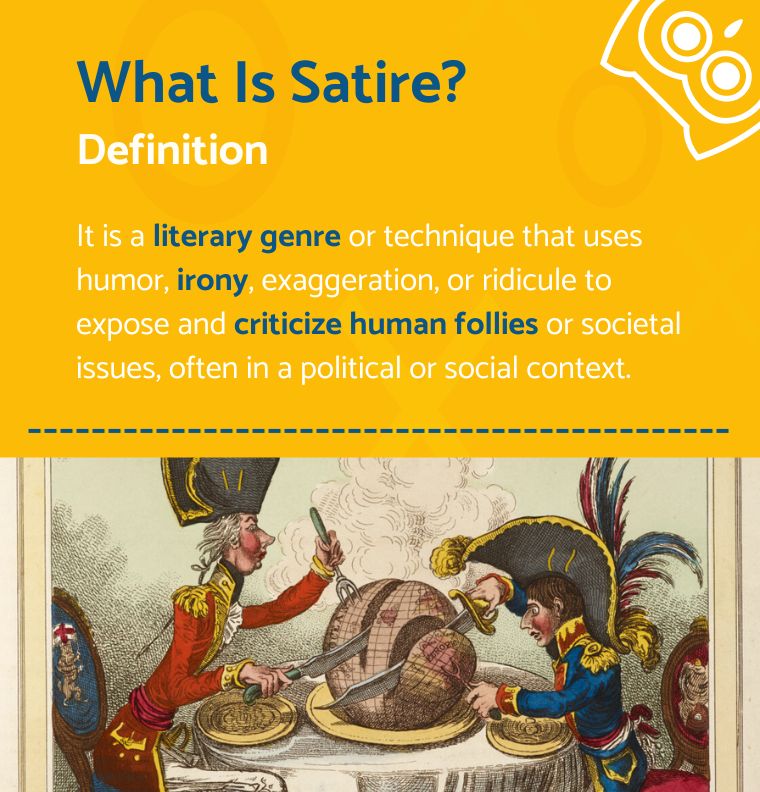
Satire, a literary genre known for its clever blend of humor and critique, has a rich history and diverse forms. Originating in ancient times, satire has been used to expose follies and vices in society, individuals, and institutions. The two main types of satire are Horatian and Juvenalian. Horatian satire, named after the Roman poet Horace, is characterized by a light-hearted and humorous tone, aiming more to amuse than to condemn. In contrast, Juvenalian satire, inspired by the Roman poet Juvenal, is more severe and abrasive, often expressing indignation and moral outrage.
The role of humor, irony, and exaggeration in satire cannot be overstated. These elements are tools for satirists to entertain, provoke thought, and challenge the status quo. For instance, exaggeration can highlight the absurdity of a situation, while irony can reveal contradictions and hypocrisies.
When considering topics for satire, it’s important to choose ones that resonate with the audience and remain relevant. Satire essay topics can range from light-hearted social commentary to more biting political criticism. The key is to select a subject that offers ample scope for humor and insightful critique. A satirical essay becomes an impactful tool for social commentary and change by selecting and handling these topics.
Elements of a Satirical Essay
A satirical essay is a unique fusion of humor and criticism woven to convey a thought-provoking message. Central to its success is a robust, clear thesis statement. This serves as the essay’s cornerstone, encapsulating the satirical argument. The thesis should be forthright and reflect the writer’s stance on the subject matter, whether it’s tinged with mockery, a critical edge, or a humorous slant.
The employment of rhetorical devices like irony, sarcasm, and parody is integral to the essence of a satirical essay. Irony stands out as a potent tool. It enables writers to express one thing while implying something else, often the opposite. This juxtaposition of the literal and the intended meaning adds layers to the satire, enriching its impact. Sarcasm, a variant of verbal irony, is adept at mocking or expressing disdain. On the other hand, parody involves imitating a subject or style to expose its flaws and absurdities.
A satirical essay is a clever blend of humor and critique, anchored by a clear, strong thesis and brought to life with the strategic use of rhetorical devices like irony, sarcasm, and parody. The choice of topic is crucial, as it needs to lend itself to satirical treatment, allowing the writer to lampoon the subject while engaging and enlightening the reader.
Choosing a Topic
The best topics for a satirical essay are those that resonate with your audience and remain relevant over time. Current events, social behaviors, and cultural phenomena are fertile grounds for satire. While choosing, consider what things to write a satire about that would engage and provoke thought in your readers. The effectiveness of your satire will depend on the relevance and universality of the topic selected.
When considering satire ideas, the topics should be chosen for their potential to be viewed through a satirical lens. This could involve turning a critical eye on societal norms, political policies, or even everyday absurdities. Funny satire topics revolve around current events, popular culture, or universal human behaviors, offering a wealth of material for insightful yet humorous critique.
Satirical essay ideas should aim to entertain, provoke thought, and encourage reflection. Topics to satirize can range from the mundane to the controversial, each offering a unique opportunity to highlight inconsistencies, hypocrisies, or the humorous side of life.
Here are some current and timeless topics that work well for satirical essays.
- The Perpetual Pursuit of the Perfect Body Image
- The Digital Detox: Escaping Social Media’s Grip
- The Billionaire Space Race: A New Playground for the Rich
- Fast Fashion Frenzy: The Race to the Bottom of Your Closet
- The Automation of Everything: When Robots Take Over Daily Tasks
- The Evolution of the Coffee Culture: From Bean to Obsession
- The “Influencer” Lifestyle: Reality vs. Instagram
- The Political Tug-of-War: A Satirical Look at Partisan Politics
- The Self-Help Paradox: More Books, Less Clarity
- The Tech Disconnect: Smartphones and the Illusion of Connection
- The Art of Procrastination in the Digital Age
- The College Admissions Arms Race: A Game of Prestige and Pressure
- The Corporate Buzzword Bingo: Synergy, Leverage, and Disruption
- The Quest for Immortality: Silicon Valley and the Fountain of Youth
- The Satire of Surveillance: Living in a Panopticon
- The Cult of Productivity: Doing More, Enjoying Less
- The Modern Dating Scene: Swiping Left on Romance
- The Vegan Revolution: Meatless Mondays and Beyond
- The Age of Misinformation: Navigating a Post-Truth World
- The Gig Economy Grind: Freedom or Freelance Frenzy?
- The Generation Gap: Baby Boomers vs. Millennials vs. Gen Z
- The Reality TV Paradox: Fame, Fortune, and Fabrication
- The Luxury of Minimalism: Spending More to Have Less
- The Endless Streaming Cycle: From Binge-Watching to Burnout
- The Battle Against Aging: Creams, Serums, and Unrealistic Expectations
- The Festival of Fads: Detoxes, Cleanses, and Other Health Mysteries
- The Tyranny of the Tidy: Marie Kondo and the Quest to Declutter
- The Irony of Connectivity: Lonelier in a More Connected World
- The Mirage of the “Perfect” Family on Social Media
- The Paradox of Choice in the Modern Consumer Society
- The DIY Disaster: When Pinterest Dreams Face Reality
- The Pursuit of Happiness Through Retail Therapy
- The Sacred Rituals of the Morning Routine YouTube Gurus
- The Mock Election: Satirizing Political Campaign Promises
- The Superhero Syndrome: The Oversaturation of Comic Book Movies
- The Great Organic Odyssey: Is It Really Better?
- The Exotic Pet Epidemic: From Tigers to Tarantulas
- The High Seas of Hobby Collecting: From Stamps to Sneakers
- The Dystopia of Driverless Cars: Are We There Yet?
- The Parable of the Paperless Office: More Paper Than Ever
Analyzing the Subject Matter for Potential Angles of Satire
Once you’ve selected a topic, the next step is to analyze it for satirical potential. Begin by identifying the subject’s inherent absurdities, hypocrisies, or contradictions. This critical examination allows you to uncover potential angles for satirical commentary. For example, in political satire, you might focus on discrepancies between a politician’s words and actions. In cultural satire, you could highlight the extremes of societal trends. This stage is vital as it sets the foundation for your satirical approach, shaping the direction and tone of your essay.
Remember, the goal is to provoke thought and discussion by presenting familiar issues in a new, humorous light. Your analysis should strike a balance between humor and insight, ensuring that your satire resonates with the audience while offering a fresh perspective on the topic.
Writing the Essay
Writing a satirical essay involves a strategic combination of humor, criticism, and a well-structured satirical essay outline . Begin with an engaging introduction that captures the essence of your satire. This could include an anecdote, a surprising fact, or a bold statement setting your essay’s tone. The introduction should culminate in a clear, concise thesis statement that encapsulates your satirical stance.
As you move into the body of your essay, each paragraph should focus on a specific aspect or example of your topic. This is where you can showcase different types of satire, such as irony, exaggeration, or parody, to strengthen your argument. Use vivid and descriptive language to paint a clear picture for your readers. Incorporating real-life examples or referencing satirical essay examples can illustrate your points. Balancing humor with factual information is important, ensuring your essay is entertaining and informative.
Consider using various rhetorical strategies to enhance your satire when developing your argument. Techniques like hyperbole can exaggerate your topic’s absurdities, while irony can highlight contradictions and inconsistencies. Sarcasm can add a sharp edge to your critique. Remember, the goal is to provoke thought and encourage a deeper understanding of the subject matter through humor.
In the concluding paragraph, summarize the main points of your essay, reinforcing your satirical message. The conclusion should echo your thesis and leave a lasting impression on the reader. A well-crafted conclusion will tie all your ideas together, emphasizing the significance of your satire and its impact on the reader’s perception of the topic.
Throughout your essay, maintain a consistent tone and style. The best satire essays are those that blend wit with wisdom, using humor as a tool to shed light on serious topics.
What is a Satirical Essay: Examples of Satirical Essays
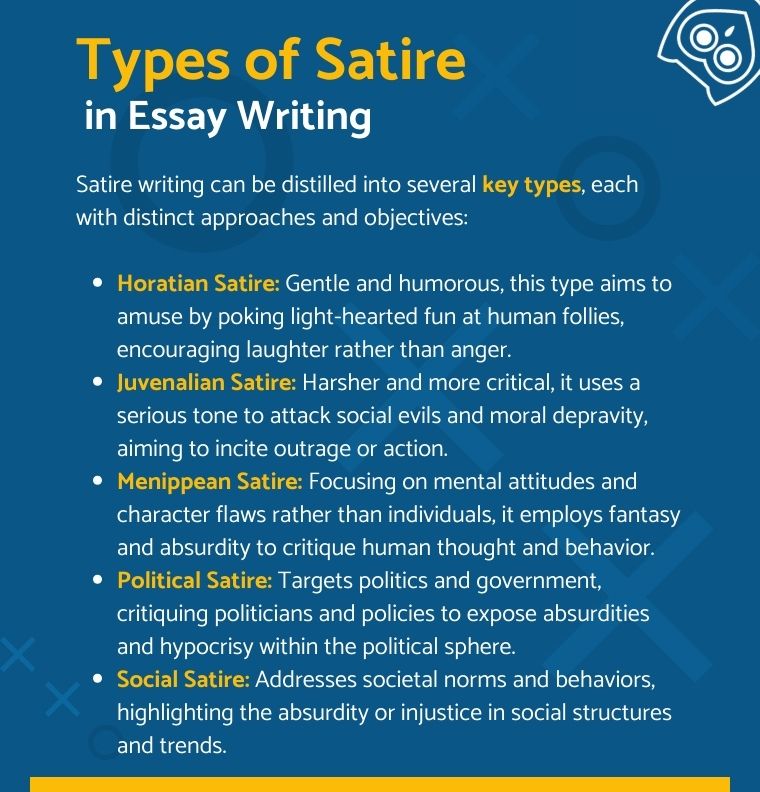
The satirical essay genre blends humor with incisive social commentary. This essay leverages wit to critique everything from political policies to societal norms, often revealing underlying truths in an entertaining and thought-provoking way.
A classic satire essay example is Jonathan Swift’s “A Modest Proposal ,” a pinnacle of Juvenalian satire. Swift’s essay, known for its biting and ironic tone, suggests that the impoverished Irish could alleviate their financial woes by selling their children as delicacies to the wealthy. This preposterous idea is not a whimsical musing but a sharp indictment of the brutal British policies towards the Irish and a comment on the apathy of the Irish people to their own plight.
This essay is a prime illustration of how to start a satire essay. Swift adopts a grave and sincere tone to advance an absurd proposition. This stark contrast between his tone and the ludicrousness of his proposal accentuates the absurdity of the situation he critiques. This strategic use of irony, where the true intent is veiled behind an opposite statement, is common in satirical essays. It allows writers to deliver powerful critiques in an engaging and impactful manner.
Another form of satire is Horatian satire, deriving its name from the Roman poet Horace. This type of satire differs from the abrasive Juvenalian style. A more playful, lighthearted approach characterizes Horatian satire. It tends to poke fun at human foibles and follies without aiming to cause distress or provoke significant change. It’s a more subdued and humorous satire, intending more to amuse than agitate.
For authors drafting a satirical essay, the choice of satire type is vital. It should align with both the subject matter and the intended message.
By analyzing seminal works like Swift’s “A Modest Proposal,” writers can learn to employ satire, creating works that are not just humorous but also insightful and thought-provoking. Effective satire has the power to be an influential tool for social commentary and change, making it a valuable and enduring form of literary expression.
Fine Line Between Satire and Offensiveness
Navigating the delicate boundary separating satire from offensiveness is paramount. While satire wields the potential for profound impact, it teeters on the edge of insensitivity. Responsible satirists know their audience and the broader context, ensuring their work critiques without inflicting harm. When addressing sensitive subjects, a delicate equilibrium is required. Satire becomes a tool for enlightenment rather than alienation or offense, using humor to shed light on societal issues without causing undue distress.
Concluding Thoughts: The Art of Writing the Satire Essay
In summary, the art of satire is a powerful yet intricate tool, merging humor with sharp social observation. Its core objective is to question established norms and provoke self-reflection. To write an effective satire essay, one must balance insightful critique with an approach that avoids offending. This genre requires a delicate touch, using wit and irony to make a point. An essential aspect of crafting a satirical piece involves creating a well-structured outline that supports the satirical thesis while engaging the reader. The creators and consumers of satire need to appreciate its significant potential to influence and its inherent responsibility towards society. Satire is not a literary device but a call to use its capabilities with wisdom and consideration.
Readers also enjoyed

WHY WAIT? PLACE AN ORDER RIGHT NOW!
Just fill out the form, press the button, and have no worries!
We use cookies to give you the best experience possible. By continuing we’ll assume you board with our cookie policy.

How to Write a Satire Essay: Types, Examples & Topics (2024)
- July 3, 2024
Dr. Marvin L. Smith
This comprehensive guide will help you master the art of writing a satire essay in record time.
Whether you’re a budding satirist or a student tackling your first satirical piece, this guide will walk you through the entire process of crafting an effective satire essay.
Table of Contents
So, without further ado, let’s dive in.
What is a satire essay?
A satire essay is a form of writing that uses humor, irony, exaggeration, or ridicule to criticize and expose human vices, follies, abuses, or shortcomings.
This type of essay aims to entertain readers while simultaneously making them think critically about societal issues, political situations, or human behavior.
Satire essays blend comedy with commentary, often targeting specific individuals, organizations, or social norms. The writer’s goal is to highlight problems or inconsistencies in a way that’s both amusing and thought-provoking.
By using wit and clever language, satire essays can make serious topics more approachable and engage readers who might otherwise avoid heavy subject matter.
Key characteristics of a satire essay include:
- Humor: The essay employs various forms of comedy, from subtle wordplay to outright mockery.
- Criticism: At its core, a satire essay critiques its subject matter, aiming to expose flaws or absurdities.
- Exaggeration: Writers often amplify certain aspects of their topic to emphasize their point.
- Irony: The use of words to convey a meaning opposite to their literal interpretation is common in satire.
- Social commentary: Satire essays typically address broader societal issues or cultural phenomena.
Types of a satire essay
There are three main types of satire essays, each with its distinct approach and tone:
- Horatian Satire:
Named after the Roman satirist Horace, this type is light-hearted and gentle in its criticism. It uses humor to poke fun at human folly and societal issues, often with a tone of amusement rather than harsh judgment. Horatian satire aims to correct through laughter and is typically more tolerant and sympathetic to its subjects.
- Juvenalian Satire:
Derived from the works of Roman poet Juvenal, this form is more harsh and abrasive. Juvenalian satire expresses strong indignation towards the vices and follies of society. It often employs sarcasm and dark humor to attack or expose what the author sees as evil or corrupt. This type is less forgiving and more likely to provoke serious thought or even outrage.
- Menippean Satire:
Named after the Greek cynic Menippus, this type focuses on criticizing mental attitudes rather than specific individuals or events. Menippean satire often targets broader philosophical or moral beliefs. It can be more abstract and experimental in form, sometimes incorporating multiple writing styles or narrative voices.
20 Satirical essay topic ideas
Here are 20 satirical essay topic ideas that could inspire engaging and thought-provoking writing:
- The benefits of replacing all school subjects with social media studies
- Why sleep is overrated: A guide to 24/7 productivity
- The art of professional procrastination in the digital age
- How to become a millionaire by selling air
- The advantages of replacing elections with reality TV show contests
- Why books are obsolete: Embracing the 280-character attention span
- The ultimate diet: Consuming only foods you can’t pronounce
- The necessity of adding more lanes to solve traffic congestion forever
- Why pets should have their own social media accounts
- The benefits of outsourcing parenting to artificial intelligence
- How to achieve world peace through competitive eating contests
- Why everyone should communicate exclusively through emojis
- The importance of judging people solely by their online presence
- How to solve climate change by ignoring it
- The advantages of replacing all vegetables with candy in school lunches
- Why walking is outdated: The case for personal hovercraft
- How to become famous by doing absolutely nothing
- The benefits of replacing all jobs with unpaid internships
- Why critical thinking is overrated: Embracing blind conformity
- How to solve overpopulation by colonizing fictional worlds
Ready to transform your writing experience?
Sign up for Blainy today and start writing your papers with confidence!
How to write satire essays
1. establish a clear and concise premise.
Begin with a well-defined idea or issue you want to critique. Your premise should be easily understood and relatable to your audience. For example, if you’re satirizing social media addiction, your premise might be “Why we should replace face-to-face interactions with social media entirely.”
2. Adopt a Bold and Distinct Perspective
Take an exaggerated stance on your topic. Push your argument to logical extremes to highlight its absurdity. In the social media example, you might argue that physical interactions are obsolete and that all communication should occur through memes and emojis.
3. Identify Unique and Exaggerated Details
Use specific, vivid details to bring your satire to life. Exaggerate real-world elements to emphasize your point. For instance, describe how people could have screens surgically implanted in their eyes for constant social media access.
4. Ensure Your Satire Resonates by Seeking Feedback
Share your work with others to gauge their reactions. Does your satire provoke thought or laughter? Are your points clear? Use this feedback to refine your essay and ensure your message is effectively conveyed.
5. Satire writing tip: engage in extensive reading
Read widely, especially works by renowned satirists. Familiarize yourself with different styles and techniques. Study how authors like Jonathan Swift, Mark Twain, or contemporary satirists craft their arguments and use humor.
6. Satire writing tip: practice writing frequently
Regular writing helps refine your satirical voice. Experiment with different tones and styles. Try writing short satirical pieces on current events or everyday situations to hone your skills.
7. Satire vs. parody
Understand the difference between satire and parody. While both use humor, satire aims to criticize and expose flaws, often with a serious underlying message. Parody, on the other hand, primarily imitates a style or work for comic effect, without necessarily critiquing it.
8. The importance of perseverance in writing
Writing effective satire takes time and practice. Don’t be discouraged if your first attempts don’t land perfectly. Keep refining your technique, experimenting with different approaches, and learning from both successes and failures. Remember that even experienced satirists continually work to improve their craft.
Satire essay examples from world literature
Satire essay examples from world literature showcase the power and versatility of this literary form. Here are some notable examples:
1. “A Modest Proposal” by Jonathan Swift (1729):
This iconic satirical essay suggests that impoverished Irish families could ease their economic troubles by selling their children as food to wealthy English landlords. Swift’s outrageous proposal critiques the heartless attitudes towards the poor and the economic exploitation of Ireland by England.
2. “Candide” by Voltaire (1759):
While technically a novella, “Candide” employs satirical techniques to mock the optimistic philosophy of Leibniz. Through a series of absurd misadventures, Voltaire ridicules the idea that “all is for the best in this best of all possible worlds.”
3. “The Devil’s Dictionary” by Ambrose Bierce (1911):
This collection of satirical definitions takes aim at various aspects of American society and human nature. Bierce’s witty and often cynical definitions expose hypocrisy and challenge conventional wisdom.
4. “Animal Farm” by George Orwell (1945):
Although a novel, “Animal Farm” is a satirical allegory of the Russian Revolution and the rise of Stalinism. Orwell uses farm animals to represent political figures and ideologies, critiquing the corruption of revolutionary ideals.
5. “The Screwtape Letters” by C.S. Lewis (1942):
This satirical work takes the form of letters from a senior demon to his nephew, offering advice on how to tempt a human soul. Lewis uses this format to critique human weaknesses and moral failings.
6. “Catch-22” by Joseph Heller (1961):
While a novel, “Catch-22” employs satirical techniques to criticize the absurdities of war and bureaucracy. The term “Catch-22” itself has become synonymous with absurd or paradoxical situations.
7. “The Onion” articles:
While not classical literature, The Onion’s satirical news articles have become a modern benchmark for satirical writing, often addressing current events and social issues with biting humor.
Satire essays stand as powerful tools for social commentary and criticism. By employing humor, irony, and exaggeration, these essays challenge readers to think critically about societal issues, cultural norms, and human behavior.
From Swift’s “A Modest Proposal” to modern works, satire continues to be an effective means of addressing complex topics in an engaging way.
As demonstrated by the examples from world literature, successful satire essays require a clear premise, a bold perspective, and attention to detail. Aspiring satirists should read extensively, practice regularly, and persevere in honing their craft.
By mastering the art of satire, writers can create compelling essays that not only entertain but also provoke thought and inspire change.
Frequently asked questions
How do i start a satire essay.
To start a satire essay effectively, begin with a strong hook that immediately establishes your satirical tone. This could be an outrageous statement, a surprising fact, or an exaggerated scenario related to your topic. Follow this with a brief introduction that outlines the issue you’re addressing and hints at your satirical approach. Remember to maintain a serious tone while presenting absurd ideas to create the characteristic irony of satire.
What is an example of satire in writing?
A classic example of satire in writing is Jonathan Swift’s “A Modest Proposal” (1729). In this essay, Swift sarcastically suggests that the Irish could solve their economic problems by selling their children as food to the wealthy. This outrageous proposal satirizes the callous attitudes towards the poor and the economic exploitation of Ireland by England.
How long is a satire essay?
The length of a satire essay can vary depending on the context and purpose. In academic settings, it might range from 500 to 1500 words. For professional publications or literary works, it could be longer. The key is to maintain the satirical tone and keep the reader engaged throughout, regardless of length. Satire often benefits from brevity, as concise writing can enhance the impact of the humor and critique.
How do you format a satire?
Formatting a satire essay typically follows a standard essay structure:
- Introduction: Present your topic and establish your satirical tone.
- Body paragraphs: Develop your satirical arguments or scenarios, each focusing on a specific aspect of your critique.
- Conclusion: Summarize your points and reinforce your satirical message.
Leveraging Blainy for Your Satire Essay
Blainy can significantly enhance your satire essay writing process. Here’s how you can use this powerful tool to streamline your work and boost your creativity:
1. Generating Topic Ideas
Stuck for a satirical subject? Blainy’s AI Essay Outline Generation feature can help brainstorm unique and timely topics. Input a broad theme like “social media addiction” or “political hypocrisy,” and let the AI suggest specific angles to explore satirically.
2. Research Assistance
Use Blainy.AI’s AI Summarizer to quickly digest complex articles or reports related to your chosen topic. This feature can help you grasp key concepts and statistics to inform your satire, ensuring your humor is grounded in factual context.
3. Expanding Your Ideas
The Essay Expander and Paragraph Generator tools can help flesh out your initial concepts. If you have a satirical premise but struggle to develop it, these features can suggest additional points, examples, or absurd scenarios to enrich your essay.

4. Crafting Opposing Arguments
To sharpen your satire, it’s crucial to understand opposing viewpoints . Blainy can help generate counterarguments, which you can then exaggerate or mock in your essay for satirical effect.
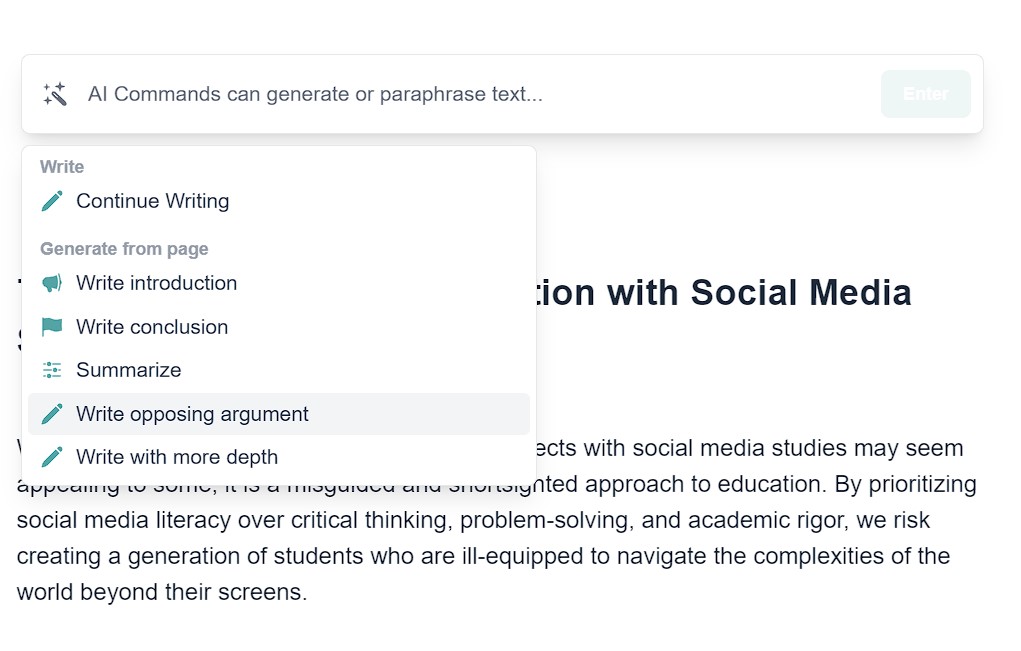
5. Enhancing Your Writing Style
Use the Paraphrasing Tool to experiment with different ways of expressing your satirical ideas. This can help you find the perfect balance between subtlety and absurdity in your writing.
6. Polishing Your Essay
The Sentence & Paragraph Expansion feature can help you refine your satire, adding more detail or exaggeration where needed to drive your point home.
Remember, while Blainy is a powerful tool, the essence of satire lies in your unique perspective and wit. Use these AI-assisted techniques to enhance your writing process, but always infuse your work with your personal satirical voice and insights.
About the Author:

The Significance of Research: Why It Matters
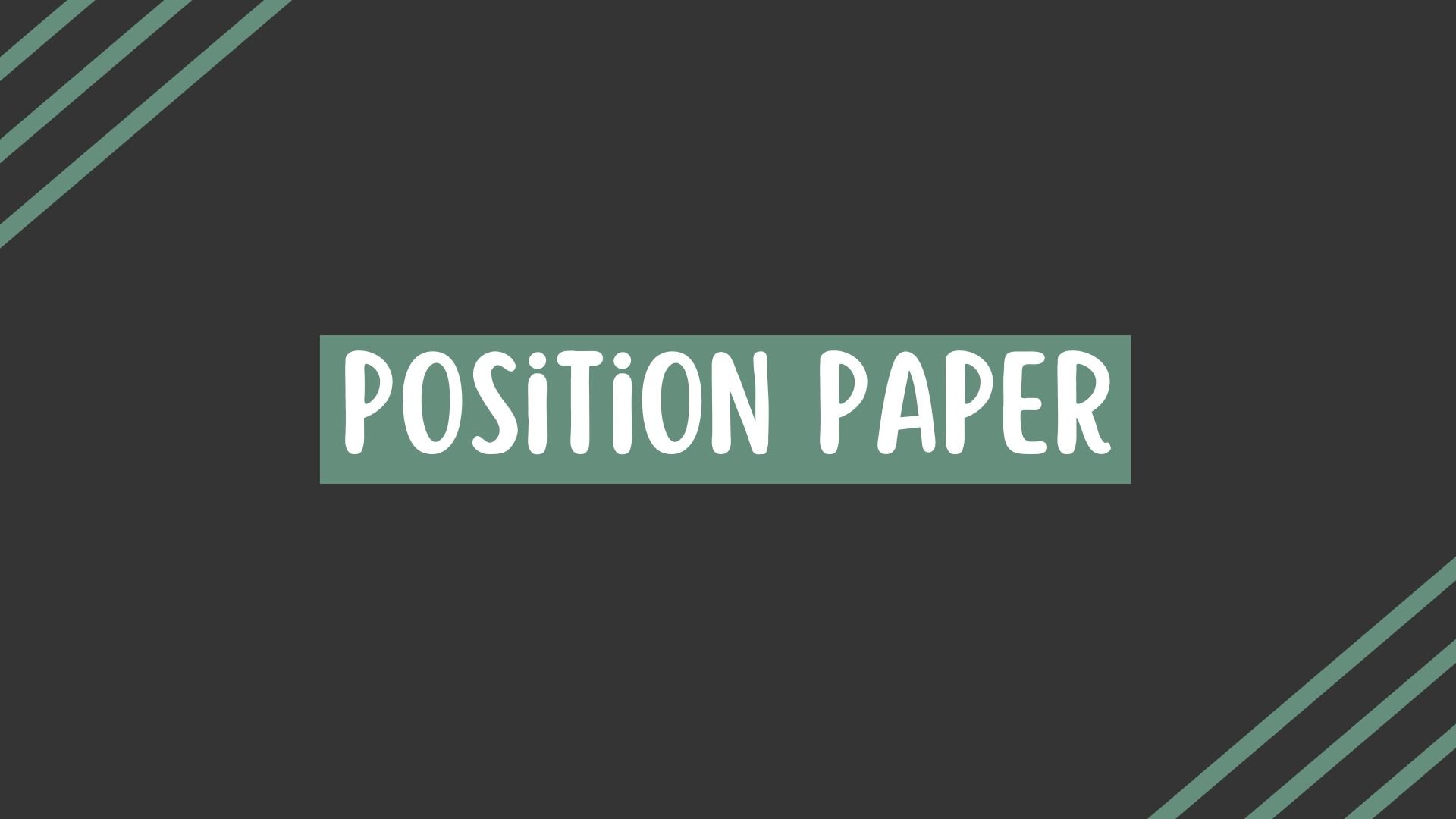
What is a Position Paper? Definition, Purpose & Examples

How to Write a Biographical Essay?
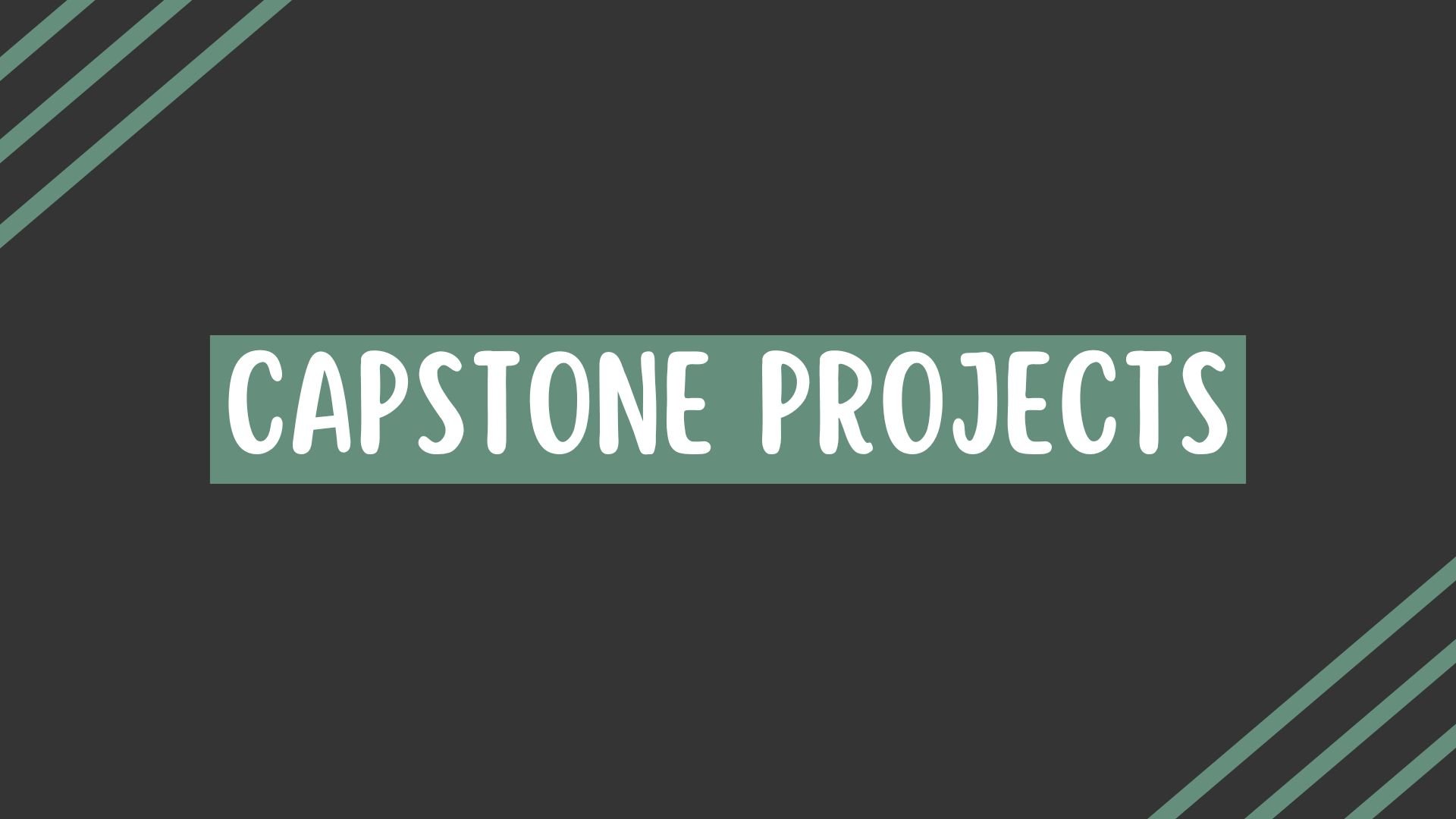
Capstone Projects 101: Definition, Purpose, and More
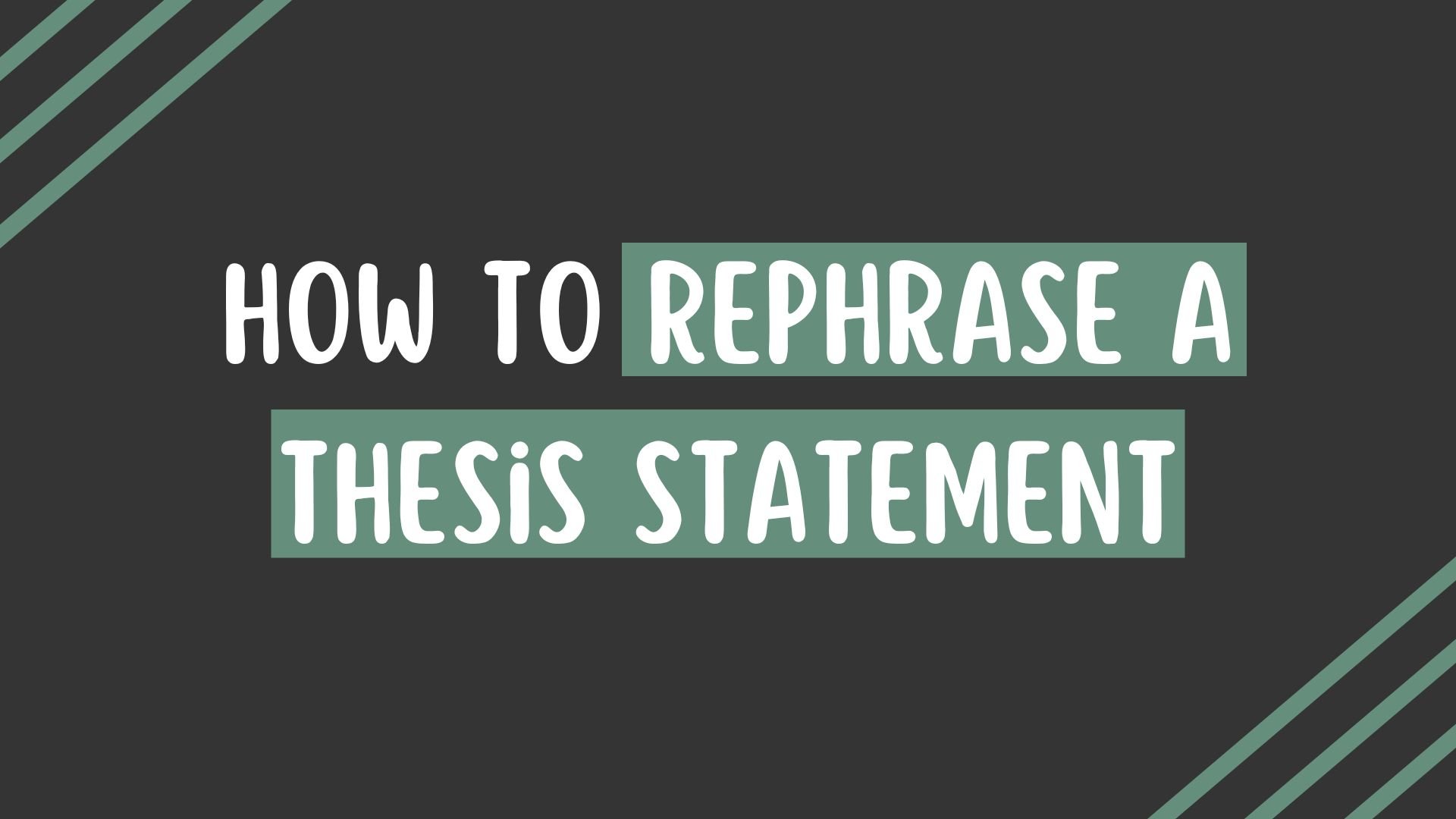
How to Rephrase a Thesis Statement in 4 Easy Steps

Conceptual Framework vs. Theoretical Framework

Unlock effortless writing excellence with the world's #1 AI-powered essay and research paper writer. Experience instant research paper perfection and elevate your writing to the next level.
Limited time offers 🎁🎉.
Black Friday Sale
Cyber Monday Sale
Discover More
50+ Free AI Tools
Terms & Condition
Privacy Policy
✉ [email protected]
✆ +971 50 760 0820
📍190 Hackett Inlet, Eastern Region, Dubai, UAE.
Copyright © 2024 Blainy

- Articles , Fun with AI , Writing
How to Write Great Satire (With Examples)

What is Satire?
Satire is a genre of literature and performing arts, characterized by its use of humor, irony, exaggeration, or ridicule to expose and criticize people’s stupidity or vices, particularly in the context of contemporary politics and other topical issues. It’s a tool for offering commentary on and criticism of its subject. Satire is more than just making jokes or mocking societal elements. It’s a sophisticated form of critique that’s carefully dressed in humor, insight, and relevance.
Satire is Critical
Satire fundamentally aims to expose and critique the flaws, faults, and shortcomings of its subjects, which could range from individuals and organizations to broader societal norms. This critique often comes with an undercurrent of moral or social improvement. Satire is not just about pointing out what’s wrong; it’s about holding up a mirror to the subject, often in a way that motivates reflection and, ideally, change. It’s a form of social commentary that seeks to bring to light the underlying issues that might otherwise go unnoticed or unaddressed.
Satire is Humorous
While satire might not always provoke outright laughter, it uses humor to make its critique more palatable and engaging. Irony and exaggeration are the hallmarks of satirical humor. They serve to soften the blow of the critique, making the message more accessible and less confrontational. This subtle infusion of humor is what often allows satire to deliver its message effectively, making complex or sensitive issues more approachable.
Satire is Usually Insightful
It’s not just about highlighting problems but also about offering a deeper understanding of the issues at hand. Satire encourages the audience to think critically and look beyond the surface. It often provides a new perspective or sheds light on aspects of an issue that may not have been apparent before. This insightful nature of satire is what gives it depth, transforming it from mere comedy into a thought-provoking critique.
Satire is Often Timely
Satire is often at its most powerful when it is topical and relevant, focusing on current events, social trends, political happenings, and prominent figures. By engaging with contemporary issues, satire stays connected with its audience, offering commentary that is immediately recognizable and relatable. This relevance is crucial as it allows satire to comment on the pulse of society, reflecting and critiquing the world as it is at that moment. Topical satire can influence public opinion and contribute to the discourse on current issues, making it a dynamic and impactful form of expression.
What Satire Isn’t
Satire is often misunderstood, sometimes conflated with mere comedy or other forms of humorous expression. Understanding what satire isn’t is crucial for appreciating its unique character and purpose. Let’s demystify this by exploring common misconceptions about satire.
Satire Isn’t Merely Funny
While humor is a fundamental component of satire, it’s a mistake to equate satire with mere comedy. Comedy aims primarily to entertain and amuse, whereas satire uses humor as a means to an end – that end being critique and social commentary. Satire embeds its humor within a context of criticism; it’s not just about making people laugh, but making them think.
Satire is Not Always Negative or Desctructive
A common misconception is that satire exists solely to criticize or tear down its subjects. While critique is a key element of satire, it’s not just about highlighting the negative. Satire often has constructive goals – it aims to expose flaws and follies to prompt introspection, discussion, and even change. It’s not destruction for the sake of destruction, but rather, a tool for shedding light on issues with the hope of improvement.
Satire Isn’t Always Obvious
Satire is not always immediately obvious or overt. It can be subtle, requiring the audience to engage and recognize the layers of meaning beneath the surface. This subtlety is part of its effectiveness; it invites deeper reflection and analysis, allowing for a more nuanced understanding of the issues at hand. This complexity means that satire can sometimes go unrecognized or be misinterpreted by those not attuned to its subtleties.
Satire Isn’t the Same as Parody
While both satire and parody use humor, they serve different purposes. Parody primarily focuses on imitation and exaggeration of a particular work, style, or genre for comic effect. It doesn’t inherently carry a critical message about broader societal issues, which is a hallmark of satire. Satire, on the other hand, while it may use parody as a technique, always has a deeper, often critical, intent.
Satire is Much More Than Sarcasm
Sarcasm is often blunt and straightforward in its ridicule or irony, and can sometimes be mean-spirited. While sarcasm might be a component of satire, satire is much broader in scope. It encompasses a wider range of humor and irony, and unlike sarcasm, it is often less about personal ridicule and more about critiquing societal structures, behaviors, and norms.
How to Write Great Satire
Choose your target.
Whether you’re poking fun at political ideologies, societal norms, cultural trends, or specific events or individuals, choosing your target is the first step in writing great satire. The key is clarity; your audience should easily be able discern what you’re satirizing. For instance, Jonathan Swift’s “A Modest Proposal” didn’t just criticize poverty in Ireland; it satirized the heartless attitudes of the wealthy towards the poor.
While ideologies, norms, and trends are common fodder for satire, the choice is vast and varied. The key is to find a subject that resonates with you and your intended audience. For example, in “Catch-22,” Joseph Heller chose to satirize the bureaucratic absurdities and paradoxes of war, targeting not just the concept of war itself but the illogical nature of bureaucracies in a high-stakes environment.
When selecting your target, it’s also crucial to consider its relevance and timeliness. Satire that connects with current events or enduring societal issues tends to have a stronger impact. The TV show “South Park,” for instance, has built its reputation on rapidly responding to current events, making its satire feel immediate and pertinent.
Another aspect to consider is the universality of your target. While it’s tempting to choose a niche subject, broader topics often have a wider appeal. This doesn’t mean you should shy away from specific targets, but rather, find ways to make them relatable to a larger audience. “Veep,” for example, while set in the specific world of American politics, uses universal themes of power, ambition, and human folly, making it accessible and amusing to a wide range of viewers.
Finally, approach your chosen target with a blend of critical insight and empathy. Satire is not just about mockery; it’s an opportunity to offer a deeper critique of a subject, potentially inciting thought and discussion. The British show “The Office” satirizes the mundanity and absurdities of everyday office life, but it does so with a sense of understanding and empathy for its characters, enriching the satire.
Find the Absurdity
The essence of satire lies in exaggeration. Identify the inherent absurdities within your subject and amplify them. Imagine satirizing a political policy about increased surveillance. You could depict a future where drones follow citizens to ensure they floss daily. The exaggeration here emphasizes the overreach of surveillance in a humorous, yet thought-provoking way.
In satire, exaggeration isn’t just a stylistic choice; it’s a tool to uncover and magnify the absurdities inherent in your subject. The goal is to transform what might be a subtle or overlooked flaw into something glaringly obvious and, ideally, laughable. This process of magnification not only entertains but also encourages your audience to reconsider the subject with a more critical eye.
To effectively find and amplify absurdity, start by observing the nuances of your target. Look for contradictions, hypocrisies, or simply the oddities that often go unnoticed. For instance, if you were satirizing the complexities of modern relationships, you might depict a scenario where a couple communicates solely through social media updates, despite living together. This exaggeration highlights the absurdity of over-reliance on digital communication in personal relationships.
Another approach is to push a logical premise to illogical extremes. Take the example of satirizing consumer culture. You could create a world where people take extreme measures, like trading essential life experiences or memories, just to purchase the latest trendy product. This not only lampoons consumerism but also subtly comments on what we value as a society.
Satire often thrives in the realm of the ‘slippery slope.’ Take a policy, trend, or behavior and ask, “What if this were taken to its extreme?” This method was famously employed in Aldous Huxley’s “Brave New World,” where the pursuit of happiness through technology and control is pushed to dystopian extremes, reflecting on the potential consequences of our own societal choices.
It’s important to balance your exaggeration so that the absurdity is evident but not so outlandish that it becomes unbelievable. The best satirical exaggerations are those that make the audience pause and think, “This is ridiculous, but it could happen,” or “This is an exaggeration, but it reflects a real issue.”
Use Irony and Contrast
Satire thrives on the disparity between reality and expectation. Irony is your ally. Illustrate the gap between how things are and how they ought to be, or between public perception and reality. Consider how George Orwell’s “Animal Farm” uses animals to depict the irony of a revolution that ends up mirroring the oppression it sought to overthrow.
Irony can be a subtle and effective way to highlight the ridiculousness of a situation. For example, satirizing the inefficiency of a bureaucratic system by portraying a department dedicated to reducing paperwork that, in fact, generates more paperwork. This ironic twist not only induces laughter but also underscores the problem in a memorable way.
One powerful form of irony is situational irony, where the outcome of a situation is the opposite of what you would expect. An example of this can be found in Jonathan Swift’s “A Modest Proposal.” Swift ironically suggests that the poor in Ireland sell their children as food to the rich. This shocking proposal starkly contrasts with the expected discourse on poverty, thereby highlighting the severity of the issue and the indifference of the elite.
Another way to utilize irony is through verbal irony, where what is said is the opposite of what is meant. This is often seen in satirical dialogues, where characters may speak in praise of something that the author intends to criticize. For example, in the television series “Veep,” characters often make grandiose statements about political integrity that are blatantly at odds with their actions, thus satirizing the duplicity often found in politics.
Contrast is equally important in satire. It can be used to juxtapose the ideal with the real, the powerful with the powerless, or the past with the present. This contrast can be seen in “The Great Gatsby” by F. Scott Fitzgerald, which uses the lavish lifestyle of the 1920s to contrast with the emptiness and moral decay of the characters’ lives, thereby critiquing the American Dream.
Another effective use of contrast is highlighting the difference between a character’s inner thoughts and outward actions. In “Dr. Strangelove,” the outward decorum and politeness of the military and political leaders starkly contrasts with the absurdity and horror of the nuclear war they are navigating, satirizing the cold war mentality and the absurdities of nuclear strategies.

The use of irony and contrast in satire is not just about creating humor; it’s about crafting a narrative that forces the audience to question and think critically about the subject at hand. By highlighting the discrepancies between reality and expectation, between what is said and what is meant, and by juxtaposing opposing ideas or values, satire can effectively critique and comment on the various facets of human society.
Balance Humor and Critique
Balancing humor and critique is the delicate tightrope walk at the heart of satire. The most impactful satirical works aren’t just amusing; they serve as a mirror, reflecting societal issues through the lens of humor. This balance is key in transforming satire from mere comedy to a potent form of social commentary.
Mark Twain, a maestro of this balance, wielded humor not as an end in itself but as a means to unveil deeper truths. In “The Adventures of Huckleberry Finn,” Twain uses the innocent perspective of a child to subtly critique the entrenched racism and moral hypocrisy of antebellum America. The humorous escapades of Huck and Jim on the Mississippi River are juxtaposed with the stark realities of slavery and societal prejudices, creating a narrative that is as thought-provoking as it is entertaining.
Another classic example is found in the works of British author Jonathan Swift. His essay “A Modest Proposal” is a masterclass in this balance. Swift uses dark humor, proposing that the poor sell their children as food to the rich, to deliver a scathing critique of the British exploitation of Ireland. The absurdity of the proposal, delivered with a straight face, heightens the underlying critique of societal indifference to the plight of the impoverished.
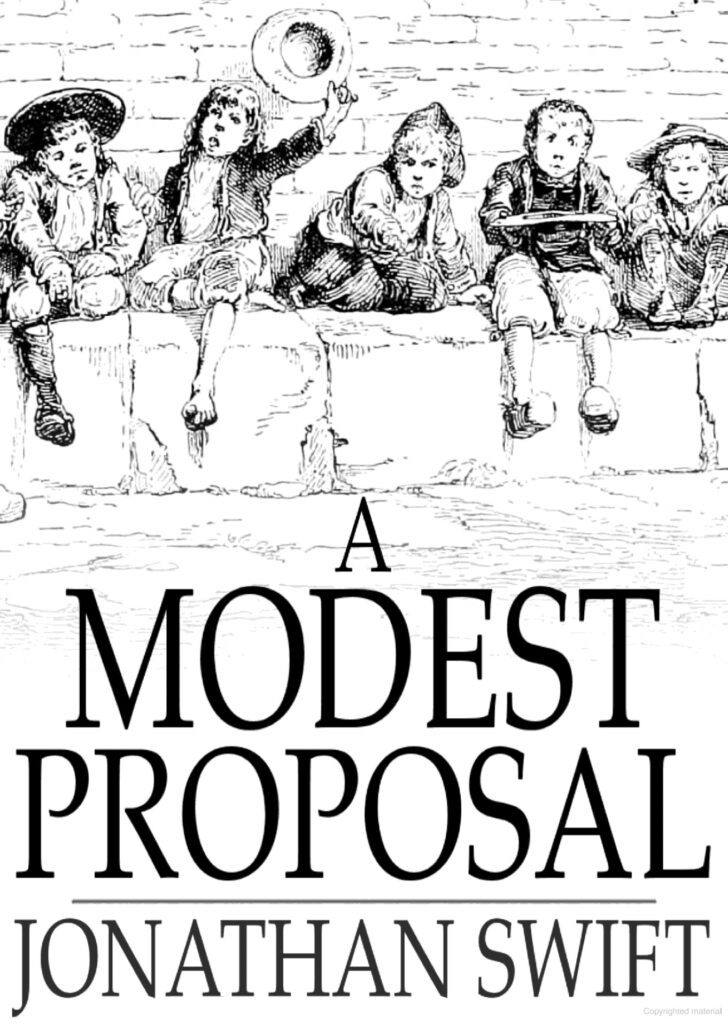
Jane Austen also excelled in this balance through her use of wit and irony to critique the social norms of her time. In “Pride and Prejudice,” Austen uses the character of Elizabeth Bennet and her sharp wit to both entertain and to subtly question the societal expectations placed on women, particularly regarding marriage and social status.
In modern times, television shows like “The Office” have continued this tradition. The show uses situational and character-driven humor to critique modern office culture, corporate management, and human relationships. The seemingly mundane setting of an office is transformed into a canvas for a humorous yet insightful commentary on the absurdities of everyday work life.
The key to achieving this balance lies in the subtlety of the critique. The humor should not overshadow the commentary; instead, it should be used to enhance it. This is achieved through careful crafting of characters, situations, and dialogues that are amusing on the surface but carry a deeper, often critical, meaning.
Great satire thrives on subtlety. It’s akin to a cleverly laid trap; the audience stumbles into realizations, rather than being directly confronted with them. This art of being implicit in your criticism is what separates good satire from mere parody or slapstick humor.

In “Parks and Recreation,” the character of Ron Swanson exemplifies a different approach to subtlety in satire. Swanson’s extreme libertarian views and his comical disdain for government, despite being a government employee, offer a nuanced critique of political ideologies and bureaucratic inefficiencies. The show refrains from directly mocking or condemning these views. Instead, it cleverly exaggerates them within a relatable and humorous framework. This leads viewers to reflect on and find humor in the paradoxes and contradictions inherent in real-world politics and government operations.
Similarly, consider the classic British sitcom “Yes, Minister.” The show never explicitly states its critique of bureaucratic inefficiency and political maneuvering. Instead, it uses the interactions and situations its characters find themselves in to highlight these issues. The audience is left to connect the dots, enjoying a laugh while simultaneously pondering the complexities of government and politics.
Subtlety in satire also involves using metaphors and allegories. Franz Kafka’s “The Metamorphosis,” while not traditionally satirical, uses the absurd situation of a man turning into an insect to subtly comment on alienation, dehumanization, and the absurdity of modern life. The reader is drawn into a bizarre narrative, only to slowly realize the underlying commentary on society.
The effectiveness of subtlety in satire is also about timing and pacing. The humor and critique should unfold at a pace that allows the audience to engage and reflect. It’s about dropping hints, not revealing the entire joke or critique upfront. The reveal, when it comes, should feel like a discovery to the audience, a reward for their engagement and understanding.
In crafting subtle satire, it’s important to maintain a balance. Too obscure, and the satire loses its impact; too obvious, and it becomes preachy. The goal is to encourage the audience to think critically, to question and to see the deeper meaning behind the humor.
Know Your Audience
The success of a satirical piece often hinges on how well the creator knows the beliefs, values, and sensitivities of their audience. Misjudging the audience can result in satire that is either too obtuse or too offensive, ultimately causing the piece to miss its mark.
One of the pitfalls of not understanding your audience is creating satire that is too esoteric. If the references, language, or the context of the satire are not accessible to the intended audience, it can lead to confusion rather than amusement or enlightenment. For instance, a satirical piece heavy with obscure literary references might resonate with an academic audience but could be lost on a general readership. This disconnect can make the satire seem aloof and unengaging.
On the other end of the spectrum, satire that is too blunt or heavy-handed can alienate the audience, especially if it crosses the line into insensitivity or offensiveness. For example, a satirical piece that makes light of a sensitive or traumatic event without considering the potential impact on those directly affected might evoke anger and backlash rather than prompting reflection or debate.
Stay Relevant: The Impact of Timeliness in Satire
Satirical works that tap into current events, social trends, and political happenings tend to resonate more deeply with audiences. This relevance not only enhances the humor but also sharpens the critique, making it a powerful tool for commentary on contemporary issues.
“Saturday Night Live” (SNL) exemplifies the effective use of current events in satire. The show’s sketches often reflect and comment on the latest political developments, pop culture phenomena, and societal trends. For instance, SNL’s political parodies, which have featured impressions of various U.S. presidents and political figures, capture not just their mannerisms but also the essence of the political climate. This timely reflection ensures that the satire is not just funny, but also poignant and thought-provoking.
Websites like “The Onion” and “The Babylon Bee” have taken the art of satirical news to a new level. These platforms publish articles that mimic the style and appearance of traditional news but with a satirical twist. They cover a wide range of topics from politics to culture, often commenting on recent news and events. For example, “The Onion” might publish a piece with a headline that’s a hyperbolic take on a current political issue, offering a humorous yet incisive critique of the situation. “The Babylon Bee” similarly uses satire, often with a more conservative slant, to comment on cultural and political issues, highlighting the absurdities in recent events.
Social media has become a fertile ground for satirical content. Memes, tweets, and short videos that satirize current events can go viral, spreading rapidly across social platforms. Yes, a meme can certainly be considered satirical. Satire often thrives on brevity and impact, qualities inherent in memes. These snippets can quickly and effectively convey commentary through a blend of images and text. This immediacy allows satirists to react quickly to events as they unfold, engaging with a broad audience in real-time. The speed and reach of social media have made it an invaluable tool for satirical commentary, enabling satirists to stay highly relevant and topical.
Writing satire is a delicate art that balances humor with critique, subtlety with clarity, and relevance with creativity. By choosing a clear target, finding the absurdity in the subject, using irony, maintaining a balance between humor and critique, being subtle, knowing your audience, and staying informed, your satirical piece – be it an article, script, story, poem, or song – can not only entertain but also offer insightful commentary.
Use AI for a Shortcut to Satire
Artificial Intelligence can write just about anything, and satire is no exception. We at Word.Studio have built a fun tool to help you quickly generate a nice blend of humor and commentary on the fly. If you would like to experiment with generating original satirical articles, try our Satirical Article Generator to draft a satirical article on just about any subject you can imagine. This is an emerging field, and AI doesn’t always excel at the nuance of humor and subtlety, but it certainly tries. You are welcome to take it for a spin to see for yourself here.
- This page was originally published by Word.Studio
- on January 10, 2024
- in Articles , Fun with AI , Writing

How to Use a Framing Device to Tell a Story Within a Story

Show, Don’t Tell: Illustrating Through Action and Description

Active Voice vs. Passive Voice
- More In Articles , Fun with AI , Writing
Related Tools

Get a brief summary or important bullet points from any piece of content.

Runway Prompt Builder
Generate detailed video prompts optimized for use with Runway ML Gen 3 Alpha

Paraphraser
A paraphrasing tool that rewords sentences, paragraphs, or full articles, offering multiple stylistic and structural options to refine your text.

Speech Writer
Whether you are giving a keynote presentation, a graduation speech, or conducting a business pitch, this AI speech writing tool can help you write a worthy first draft.

Novel Outliner
Tailored for creative writers, Storyline Sculptor aids in crafting detailed novel outlines, focusing on plot intricacies, character development, and seamless narrative flow.
- Browse All Tools

A suite of specialized AI tools that write, brainstorm, fine-tune, and unlock new creative superpowers. Subscribe to get full access to our entire library of tools.
Word.Studio is LLM agnostic, which means that our tools are run by the most powerful and appropriate AI models selected for the task at hand.

- Cover Letter Writer
- Freelancer Bio Writer
- Blog Post Writer
- Professional Bio Writer
- Article Writer
- Glossary Generator
- Business Tools
- Creative Tools
- Writing Tools
- Career & Job Search
- Hiring & Recruiting
- Sales Tools
- Teaching Tools
- Storytelling Tools
- Word.Studio Tools
- Articles & Tutorials
- GPT Directory
- Prompt Templates
- AI Glossary
- AI Tool Development
- Custom GPT Development
- Terms of Service
- Privacy Policy
Word.Studio 2024 - Terms & Privacy
Exploring 60+ Creative Satirical Essay Topics: Beyond Comedy

- Post author By admin
- November 8, 2023
Explore a world of wit and humor with our satirical essay topics. From societal absurdities to playful parodies, find inspiration for your next laughter-inducing masterpiece.
Imagine being able to express your opinions, critique the world, and entertain your audience, all while having a good laugh.
That’s the magic of satirical essays. These essays provide a unique platform where humor meets social commentary, and where you can make a powerful point with a touch of wit and sarcasm. However, the success of a satirical essay hinges on the topic you choose.
So, whether you’re aiming to tickle funny bones or provoke deep thoughts, this article is your guide to the world of satirical essay topics.
We’ll explore ideas that are not only hilarious but also thought-provoking. Get ready for a journey through the realm of satire as we uncover the perfect subjects to fuel your creativity and captivate your readers.
Table of Contents
The Art of Satire
Satire is like a secret doorway into the world of wit and wisdom, where humor becomes a tool for unveiling the absurdities of life.
It’s an art form that has been around for ages, tickling our funny bones while nudging us to think deeper. So, what’s the deal with satire, and how does it weave its magic?
At its core, satire is like a sly social commentator. It puts society, individuals, or even entire systems under a magnifying glass, exposing their quirks, flaws, and idiosyncrasies. But here’s the twist – it does all this while making us laugh, cringe, and nod in agreement.
Satire is a versatile beast, lurking in literature, theater, TV shows, and the wild world of the internet. You can stumble upon it in essays, short stories, cartoons, or even stand-up comedy.
No matter the form, satire’s mission remains constant: to challenge the norms and jolt us into questioning our reality.
What makes satire special is its talent for confronting the unmentionable. It deals with the tough stuff – the controversial, the uncomfortable, and the thought-provoking – all wrapped up in a hilarious package. It’s like delivering bitter medicine with a sweet coating.
Mastering the art of satire demands a sharp mind and a good grip on society’s quirks. It involves using humor as a Trojan horse, smuggling important messages behind the laughter.
Satirists are the word acrobats, using irony and sarcasm to create a gap between words and meanings, inviting us to read between the lines.
Satire isn’t just about teasing others; it’s also a way for creators to turn the humor microscope on themselves and their own society. It’s a bit like saying, “We’re all in this together, folks. Let’s laugh at our shared absurdities.”
In the end, satire is a waltz between laughter and contemplation. It’s a potent tool that can hold a mirror up to the truth, challenge the powerful, and kickstart change.
So, the next time you giggle at a satirical piece, remember, it’s not just humor; it’s an artful invitation to see the world from a different angle.
Finding the Perfect Satirical Essay Topic
So, you’re gearing up to dive into the world of satirical essays, armed with humor and a desire to make a point. But there’s one small challenge: what on earth should you satirize?
Finding the perfect satirical essay topic can feel like hunting for buried treasure in a vast sea of ideas. But don’t worry; we’re here to make the search more exciting than daunting.
Explore Life’s Quirky Side
Let’s start with the everyday oddities that often go unnoticed. Satire thrives on the absurdities of life. So, consider topics like “The Chronicles of Awkward Elevator Encounters” or “The Epic Saga of Misplacing Car Keys.”
Roast Society’s Foibles
Satire is a powerful tool for poking fun at societal flaws. Delve into topics like “The Unbelievable World of Clickbait Headlines” or “The Drama of Oversharing on Social Media.”
Mock Trends and Hypes
Trends and fads come and go, but their absurdity lingers. Satirical essays can take a hilarious spin on subjects like “The ‘Instant Celebrity’ Recipe” or “The Quest for the Ultimate Superfood.”
Expose Hypocrisy
Nothing’s quite as amusing as uncovering double standards. Consider topics like “The Eco-Warrior with a Private Jet” or “The ‘Healthy Living’ Guru Who Sneaks Midnight Snacks.”
Satirize Celebrity Culture
Celebrities and public figures are a satirist’s playground. Create essays like “A Day in the Life of a Paparazzo” or “The Politician’s Guide to Perfecting the Fake Smile.”
Twist Timeless Tales
Classic stories and fairytales can get a satirical makeover. Imagine “Snow White’s Reality TV Dilemma” or “The True Story Behind ‘Jack and the Beanstalk.'”
Tease Technology
Our tech-infused lives offer endless satirical material. Think about subjects like “The Smartphone Addiction Chronicles” or “The Comedy of Online Dating Fails.”
Skewer Schooling
Educational systems have quirks worth exploring. Consider topics like “The Art of Mastering Procrastination in College” or “The Confessions of a Self-Help Guru’s Ghostwriter.”
Roast Pop Culture
Pop culture is a goldmine for satire. Delve into topics like “The Art of Reality TV Editing” or “Decoding Celebrity Baby Names.”
Reflect on Human Quirks
Sometimes, the best satirical essays explore the oddities of human behavior. Think about subjects like “The Secret Language of Passive-Aggressiveness” or “The Science of Cringe-Worthy Moments.”
Remember, the key to a fantastic satirical essay is to mix humor, irony, and a dash of social critique. Seek out the absurd in the ordinary, and don’t be afraid to push the boundaries of creativity.
With the right topic in your sights, you’re on your way to crafting a satirical masterpiece that’s not only entertaining but also thought-provoking, leaving your readers chuckling and pondering the world around them. Happy satirizing!
Satirical Essay Topics
Check out satirical essay topics:
Social Issues
- The “Selfie Olympics”: A Humorous Take on Self-Obsession
- “Smart” Appliances: How Your Toaster Is Plotting Against You
- The Art of Ghosting in Modern Dating: A Guide for Cowards
- “Influencer” Starter Kits: A Satirical Look at Vanity in a Box
- “Political Correctness” Gone Mad: The Absurdity of Language Policing
- The Faux Philanthropist: Exposing Fake Social Activism
- Instagram Filters: The Gateway Drug to Plastic Surgery
- The Chronicles of “Healthy” Fast Food Chains
- “Inspirational” Quote Overload: When Motivational Messages Lose Their Meaning
- The Irony of “Cancel Culture”: Who’s Next in Line for Erasure?
Technology and Digital Age
- The Amazon Echo: Is Your Virtual Stalker Also a Comedian?
- The Satire of Social Media “Influencers” Selling the Impossible
- The Comedy of Clickbait: When Everything Is “Mind-Blowing”
- GPS Devices: Helping You Get Lost Like a Pro
- The Hilarity of Internet Trolls: A Deep Dive into the Art of Anonymity
- The True Cost of “Free” Apps: Selling Your Soul for Candy Crush
- The Mystery of “Smart” Home Devices: Are They Plotting World Domination?
- The Ridiculous World of Internet Challenges: From Cinnamon to Tide Pods
- The Irony of Virtual Reality: Escaping the Real World to Do the Same Things
- The Evolution of “Face Filters”: From Cute Animals to Unrecognizable Humans
Education and Learning
- The Art of “Wikipedia Scholar” Degrees
- Group Projects: Where Slackers Become the Best Magicians
- The Science of Fake Homework Excuses: A Comprehensive Study
- The Irony of “Learning Styles”: Are You a Visual, Auditory, or Kinesthetic Liar?
- The Satire of “No Child Left Behind”: How We Left Them All Behind
- The Comedy of “Participation Trophies”: Everyone’s a Winner (Except Not Really)
- Teachers’ Lounge Conspiracy Theories: What Really Happens in There
- The Mystery of Library “Silence” Zones: The Noisiest Places on Campus
- The Chronicles of “Extra Credit” Hustlers: Masters of the Brown-Nosing Arts
- “Back to School” Sales: How to Convince Kids That Pencils Are Fashion Statements
Pop Culture
- Celebrity Fragrances: Smelling Like You Could Be Famous
- The Comedy of Reality TV: Where Non-Celebrities Act Like Celebrities
- The Hilarity of Award Show Speeches: From “Genuine” Tears to Thanking Your Dog
- The Mystery of Viral Internet Challenges: Surviving the Stupidity
- The Absurdity of Tabloid Headlines: Alien Babies and Celebrity Reincarnations
- “Trendy” Diets: From the Cabbage Soup Cleanse to the Twinkie Diet
- The Satirical Take on Superhero Films: When Spandex Saves the Day
- The Comedy of “Real Housewives” Shows: Unreal Lives in Expensive Houses
- Celebrity Social Media Feuds: The Battle for the Most Retweets
- “Cool” Urban Legends: Bigfoot’s Hipster Cousin and the Loch Ness Hipster
Environmental Issues
- The Comedy of Earth Day Parades: Marching for the Planet with Plastic Signs
- The Irony of “Eco-Friendly” Disposable Diapers: Breaking Down in a Million Years
- The Green Guilt Trip: How Your Neighbor’s Solar Panels Shame You
- The Chronicles of the “Green” Car Owner: Driving a Gas Guzzler with a Green Sticker
- “Zero-Waste” Instagram Accounts: How to Produce Tons of Trash for Likes
- “Organic” Fast Food: Because Deep-Fried Organic Is Healthier, Right?
- The Absurdity of “Recycling” Electronics: Sending Your Old Laptop to a Landfill
- The Hilarity of “Farm-to-Table” Restaurants: How Far Is That Farm, Really?
- “Eco-Friendly” Water Bottles: Saving the Earth, One Plastic Bottle at a Time
- The Satire of “Vegan” Junk Food: Tofu Hot Dogs and Deep-Fried Kale Chips
Political Issues
- Political Campaign Slogans: Promising Everything, Delivering Nothing
- The Comedy of Political Debates: Where Civility Goes to Die
- Political “Spin Doctors”: Turning Scandals into Inspirational Stories
- The Absurdity of Political Ads: Making Promises You Know Won’t Be Kept
- The Mystery of Bureaucratic Jargon: Translating “Government Speak” into English
- Election Promises vs. Reality: A Satirical Look at Broken Pledges
- The Irony of Campaign Fundraising: How the Poor Donate to the Rich
- Presidential Twitter Wars: When World Leaders Act Like Teenagers
- Political Conventions: Where Balloons Are the Highlight of the Evening
- The Satire of Political Polls: Predicting the Future with a Magic 8-Ball
The Recipe for a Perfect Satirical Essay
Satirical essays are a unique and entertaining form of writing that allows you to explore and critique various aspects of society, culture, and human behavior with a humorous twist.
Crafting the perfect satirical essay requires a blend of wit, humor, and keen observation. Whether you’re an experienced satirist or just dipping your toes into this literary art form, here’s the recipe for creating a deliciously satirical essay:
Choose a Target
Start by identifying your target, which is the subject of your satire. It can be a social issue, a cultural phenomenon, a common behavior, or any aspect of society that you find intriguing or absurd.
Your target should be something you have strong opinions about, as satire involves commentary.
Understand Your Audience
Consider your audience’s sensibilities and preferences. Satire should be funny and thought-provoking, but it should also resonate with your readers. Know what will make them chuckle or nod in agreement.
Develop a Strong Thesis
Your satirical essay should have a clear thesis statement that conveys your central message or criticism. This statement will guide your entire essay and help your readers understand the purpose of your satire.
Embrace Exaggeration
Exaggeration is a key ingredient in satirical writing. Amplify the flaws, quirks, or absurdities of your target to an extreme degree. Push it to the limit to create humor and emphasize the point you’re making.
Employ Irony and Sarcasm
Irony and sarcasm are your trusty companions in satire. Use them to highlight the gap between appearances and reality, between what’s said and what’s meant. Witty one-liners and clever wordplay can add an extra layer of humor.
Employ Parody
Parody involves mimicking or imitating a particular style, genre, or individual to create humor. You can parody well-known personalities, famous works of literature, or iconic brands. This approach adds a layer of recognition for your readers.
Use Hyperbole
Hyperbole is an extravagant exaggeration used for emphasis. It’s an effective tool for satirists. Make the ordinary extraordinary, and the absurd even more ridiculous with the use of hyperbole.
Employ Ridicule
Ridicule is the act of mocking or making fun of your target. It’s a fundamental component of satire. Create amusing caricatures, funny situations, or absurd scenarios to ridicule your subject.
Craft a Catchy Title
Your essay’s title is your first chance to grab your readers’ attention. Make it catchy, clever, and relevant to your subject matter. A well-crafted title sets the tone for your satire.
Provide Real-World Examples
Support your satire with real-world examples, anecdotes, or observations. These give your essay authenticity and make your critique more relatable.
Maintain Consistency
Stay consistent in your satirical approach throughout the essay. Your humor, tone, and style should remain constant from start to finish.
Offer a Resolution or Alternative
A good satirical essay doesn’t just point out flaws; it suggests improvements or alternative solutions. Offer a thought-provoking resolution or present an absurd alternative to highlight the flaws in the existing system or behavior.
Revise and Edit
Like any other type of writing, satirical essays benefit from revision and editing. Review your work for clarity, coherence, and grammatical correctness. Ensure that your humor is sharp and your message is clear.
Seek Feedback:
Share your essay with friends or colleagues and ask for their feedback. A fresh perspective can help you refine your satire.
Don’t Cross Boundaries
While satire encourages humor and exaggeration, be mindful not to cross into offensive or hurtful territory. Your satire should be amusing and thought-provoking, not mean-spirited.
Incorporate these ingredients into your satirical essay recipe, and you’ll be on your way to creating a delicious, thought-provoking, and entertaining piece of satirical writing.
Remember, the goal is not just to make your readers laugh but also to make them think. Happy satirizing!
What is a good topic for satire?
When it comes to crafting a satirical essay, choosing the right topic is essential. A good satirical topic should be timely, relevant, and capable of shedding light on the hypocrisy, absurdity, or foolishness prevalent in a particular person, group, or institution.
Here, we present a handful of excellent topics ripe for satirical exploration:
The Social Media Obsession
Satire can delve into our incessant phone-checking habits and the constant updates on our lives. Explore the addictive nature of likes and followers in the digital age.
The Political Circus
Politics is a treasure trove of satirical material. Unveil the world of empty promises made by politicians or their peculiar fascination with fundraising over serving constituents.
The Cult of Celebrity
Delve into the worship of celebrities and society’s fixation on every move they make. Expose the extremes of idolizing famous figures.
Commercialized Holidays
Highlight the shift of holidays from meaningful family and friend gatherings to consumerist extravaganzas. Satirize the overwhelming emphasis on shopping.
The Wellness Mania
Poke fun at the relentless pursuit of healthy eating and exercise, sometimes taken to the point of neuroticism. Examine society’s obsession with wellness.
These topics serve as a starting point, and there are numerous other excellent options for satirical essays. The key lies in selecting a topic that seamlessly combines humor with thought-provoking insights, fostering essential conversations about pertinent issues.
In the realm of satire, humor is the vehicle, but reflection is the destination.
What is a satirical essay?
Satirical essays are a unique genre that employs humor, irony, exaggeration, and various literary devices to critique individuals, groups, or institutions.
Their purpose is to reveal hypocrisy, absurdity, or foolishness, all while prompting readers to view essential issues from a fresh perspective.
Let’s explore the defining features of a satirical essay:
Humor with a Purpose
Satirical essays are inherently humorous, but this humor serves a greater objective. It isn’t merely for laughter’s sake; it’s a powerful tool used to underscore the essay’s subject.
Masters of Irony and Sarcasm
Satire relies heavily on irony and sarcasm, two potent instruments. Irony involves using words in a way that contradicts their actual meaning, while sarcasm is a form of irony that expresses contempt or criticism.
Exaggeration for Effect
Satirical essays often amplify the flaws and shortcomings of their subjects. This amplification serves to sharpen the essay’s point and portray the subject in an even more ludicrous light.
Laser-Focused on Specifics
These essays are not vague musings. They pinpoint particular individuals, groups, or institutions, enhancing their effectiveness in conveying a message.
Clever and Witty Execution
A successful satirical essay should be clever and witty. Without these qualities, it risks losing its humor and impact.
In the world of satirical essays, humor is the vehicle, but enlightenment is the destination. These essays serve as a remarkable means to provoke reflection on crucial issues, all while bringing a smile to the reader’s face.
What is a good satire example?
In the world of literary satire, some timeless classics have managed to tickle our funny bones while offering profound insights.
These masterpieces don’t just amuse us; they make us ponder the follies of human nature and society. Here are a few of these gems:
1. Gulliver’s Travels by Jonathan Swift (1726)
Swift takes us on a whimsical journey with Lemuel Gulliver through lands like Lilliput, Brobdingnag, and more. But beneath the fantastical adventures lies a clever satire on the quirks of humanity, politics, and society.
2. Candide by Voltaire (1759)
Voltaire’s story follows the eternal optimist Candide, who explores the world and encounters a string of misfortunes. Through Candide’s misadventures, Voltaire uses satire to skewer the notion of unbridled optimism and reflect on the harsh realities of our world.
3. Animal Farm by George Orwell (1945)
Orwell’s allegorical tale is a biting critique of the Russian Revolution and the emergence of Stalinism. As a group of farm animals rebel against their human overlords to create their society, Orwell uncovers the corrupting influence of power.
4. Catch-22 by Joseph Heller (1961)
Heller’s novel hilariously underscores the absurdity of war and the bureaucratic maze of the military. Captain John Yossarian, a U.S. Air Force bombardier feigning insanity to avoid more bombing missions, embodies the dark comedy that ensues in wartime.
5. A Confederacy of Dunces by John Kennedy Toole (1980)
Toole paints a satirical portrait of Southern culture and the elusive American Dream through the comical misadventures of Ignatius J. Reilly. A lovable yet exasperating character, Ignatius dreams of becoming a writer while wrestling with his own eccentricities.
These works are just a sampling of the rich tapestry of satire in literature. They remind us that humor can be a powerful tool for reflecting on society and uncovering truths in the quirkiest and most unexpected ways.
In the enchanting world of satire, the boundaries are as limitless as your creativity. Satirical essay topics offer a stage where humor, irony, and cleverness intertwine, allowing us to dive headfirst into the quirks of human behavior, the baffling peculiarities of society, and the intricacies of our ever-evolving world.
These topics spark laughter, but they do much more – they beckon us to think. Satirical essays act as a mirror, reflecting back the contradictions, paradoxes, and absurdities we often overlook.
They prod us to question the norms, to challenge established norms, and to perceive the world from a fresh angle.
So, whether you’re composing a satirical essay to entertain, to shed light on social issues, or just for the sheer joy of wit, remember that satire transcends humor – it’s an art form that inspires contemplation.
It’s a delightful nudge that reminds us humor can be a powerful instrument for change, and that even the weightiest of subjects can benefit from a sprinkle of humor.
So, let your imagination soar and your pen dance merrily, because who knows, amid the chuckles, you might uncover profound truths that were hiding in plain sight.
Frequently Asked Questions
What is the purpose of a satirical essay.
A satirical essay aims to criticize and ridicule societal issues, individuals, or institutions using humor, irony, and exaggeration. Its purpose is to entertain, make readers think, and shed light on the absurdities of our world.
Can I use satire to discuss serious topics?
Absolutely! Satire is a powerful tool to address serious issues indirectly. It allows you to critique and challenge the status quo while keeping your readers engaged through humor.
How do I maintain a balance between humor and critique in a satirical essay?
Balancing humor and critique in a satirical essay is key. Ensure that your humor supports your critique and doesn’t undermine the seriousness of the issue you’re addressing. Clever wit and well-crafted irony can help maintain this balance.
Is it essential to use real examples in a satirical essay?
While using real examples can enhance the impact of your satire, it’s not always necessary. You can create fictional scenarios and characters to highlight the absurdities
- australia (2)
- duolingo (13)
- Education (284)
- General (77)
- How To (18)
- IELTS (127)
- Latest Updates (162)
- Malta Visa (6)
- Permanent residency (1)
- Programming (31)
- Scholarship (1)
- Sponsored (4)
- Study Abroad (187)
- Technology (12)
- work permit (8)
Recent Posts


IMAGES
VIDEO